about the writer
Kelly Baldwin Heid
Kelly Baldwin Heid holds an MSc in Global Urban Health from the University of Freiburg, where she is currently completing a PhD exploring the connections between urban biodiversity and human health. As an Expert on the Biodiversity and Nature-based Solutions team at ICLEI Europe, Kelly works with cities to develop Urban Nature Plans, bridge the biodiversity-finance gap, and facilitate capacity building programmes.
Introduction
Nature-based Solutions in Education: If the benefits are clear, why isn’t it mainstream?
Bridging the gap between what we know and what we do is the real challenge for the future of NbS in education.
Nature-based Solutions (NbS) are increasingly recognised as important factors to address climate, health, and equity challenges in cities. In the field of education, they are showing up in the form of green schoolyards, outdoor classrooms, and living labs―approaches that bring learning outdoors and reconnect students with nature. NbS are being embraced not only as the subject of learning but as infrastructure for learning itself. This is supported by the strong and growing evidence that learning in green spaces provides cognitive, emotional, and social benefits, such as improved academic performance, stronger mental health, better attention spans, and deeper community cohesion. Projects like NBS EduWORLD have worked to translate this evidence into policy, practice, and institutional change across Europe.
The evidence is there, and the benefits are clear.
So the question is no longer: Does NbS education make sense?
The question is: If it makes so much sense, why isn’t it happening everywhere?
There is strong evidence supporting the benefits of NbS in education, including improvements in student well-being, positive academic outcomes, and environmental stewardship (Humphreys and Blenkinsop 2018; Mann et al. 2022; Kiviranta et al 2024). In parallel, policy frameworks at national and international levels increasingly advocate for integrating NbS into learning environments. For example, the European Commission’s Green Deal and the UN Decade on Ecosystem Restoration both highlight the importance of embedding nature into education systems as part of a broader sustainability transformation (European Commission, 2023; UNEP 2021).
Despite this, many schools struggle to implement NbS education. Barriers include a lack of teacher training, rigid curricula, insufficient funding, and unequal access to green space. For instance, a global study by UNESCO found that teachers frequently report low confidence and inadequate training in delivering outdoor or sustainability-related education (Collado et al. 2020; UNESCO, 2021). Similarly, curriculum demands and standardized testing often leave little room for nature-based or experiential approaches to learning (Barrable & Booth, 2020; Utkarsh 2023). Funding challenges persist, especially in under-resourced schools, where even basic green infrastructure may be lacking. Access to safe and high-quality green spaces is also highly unequal, reflecting broader patterns of environmental and social inequality (Han et al. 2023). In many cases, NbS continues to be viewed as a “nice-to-have” rather than a core component of pedagogy, often sidelined in favor of traditional indoor instruction.
Another important barrier may be that, as NbS professionals, we have not yet made the case convincingly enough or provided suitable, accessible materials for educators. Do we fully understand what teachers and schools actually want or need from us? Without closer alignment between educational needs and the NbS community’s offerings, uptake is likely to remain sidelined.
This roundtable brings together voices from across Europe and beyond―some engaged in the Horizon Europe NBS EduWORLD project, others leading efforts in classrooms, municipalities, universities, and communities―to confront this paradox.
We ask:
- What’s standing in the way of mainstreaming NbS in education?
- Are we expecting too much from schools―or not supporting them enough?
- Who gets access to the benefits of NbS learning environments, and who is left out?
- Can NbS become not just content within education, but a principle that reshapes how we design learning systems altogether?
 Co-produced with NbS EduWORLD, and assistance from Network Nature, this roundtable invites both optimism and critique―because bridging the gap between what we know and what we do is the real challenge for the future of NbS in education.
Co-produced with NbS EduWORLD, and assistance from Network Nature, this roundtable invites both optimism and critique―because bridging the gap between what we know and what we do is the real challenge for the future of NbS in education.
References
Barrable, A. and Booth, D. (2020) ‘Increasing Nature Connection in Children: A Mini Review of Interventions’, Frontiers in Psychology, 11. Available at: https://doi.org/10.3389/fpsyg.2020.00492.
Collado, S., Rosa, C.D. and Corraliza, J.A. (2020) ‘The Effect of a Nature-Based Environmental Education Program on Children’s Environmental Attitudes and Behaviors: A Randomized Experiment with Primary Schools’, Sustainability, 12(17), p. 6817. Available at: https://doi.org/10.3390/su12176817.
European Commission. Directorate General for Communication. (2023) The European Green Deal :delivering the EU’s 2030 climate targets. LU: Publications Office. Available at: https://data.europa.eu/doi/10.2775/591824 (Accessed: 17 July 2025).
Han, Y. et al. (2023) ‘Inequality in urban green provision: A comparative study of large cities throughout the world’, Sustainable Cities and Society, 89, p. 104229. Available at: https://doi.org/10.1016/j.scs.2022.104229.
Humphreys, C. and Blenkinsop, S. (2018) ‘Ecological Identity, Empathy, and Experiential Learning: A Young Child’s Explorations of a Nearby River’, Australian Journal of Environmental Education, 34(2), pp. 143–158. Available at: https://doi.org/10.1017/aee.2018.20.
Kiviranta, L. et al. (2024) ‘Outdoor learning in early childhood education: exploring benefits and challenges’, Educational Research, 66(1), pp. 102–119. Available at: https://doi.org/10.1080/00131881.2023.2285762.
Mann, J. et al. (2022) ‘Getting Out of the Classroom and Into Nature: A Systematic Review of Nature-Specific Outdoor Learning on School Children’s Learning and Development’, Frontiers in Public Health, 10. Available at: https://doi.org/10.3389/fpubh.2022.877058.
Otto, S. and Pensini, P. (2017) ‘Nature-based environmental education of children: Environmental knowledge and connectedness to nature, together, are related to ecological behaviour’, Global Environmental Change, 47, pp. 88–94. Available at: https://doi.org/10.1016/j.gloenvcha.2017.09.009.
UNESCO (2021) Learn for our planet: A global review of how environmental issues are integrated in education. Available at: https://unesdoc.unesco.org/ark:/48223/pf0000377421 (Accessed 17 July 2025).
United Nations (2021) Decade on Ecosystem Restoration 2021-2030. Available at: https://www.decadeonrestoration.org/ (Accessed: 23 June 2025).
Utkarsh, S. (2023). Integrating Nature in Education: Unlocking the Potential of Transformative Learning for Sustainability. Available at: https://networknature.eu/sites/default/files/uploads/networknature-policy-brief-rd-final.pdf
about the writer
Ella Kearney
Ella is a valued member of the Offaly County Council Climate Action Team, having join in 2024. She has dedicated her time to the NBS EduWORLD project and contributed across many work packages. Ella has a degree in Climate & Environmental Sustainability from DCU and brings her wealth of knowledge and expertise to the project.
Ella Kearney
The answer to this is that the people who engage with climate action, practice sustainability, upskill their knowledge around NbS practices and climate, and want to create a more resilient future are the people the initiative has already infiltrated in the best way.
The prompt asks about how the educational system struggles to implement NbS into the curriculum, and what solutions would help to address this issue. When considering the topic of NbS in education, I think it’s essential to note that a one-size-fits-all solution will not work. Each school system, country, government policy, and so on is widely different and requires a different approach to tackle the situation.
I believe governmental support is a huge area that can be improved to help the integration of NbS in education succeed. I want to note that governmental support should involve the allocation of adequate resources and time to the cause. Without funding, time, and toolkits, integrating NbS into education is an impossible task. Also, behavioural change is needed within all institutions when discussing climate action and NbS. The wording around climate action and NbS needs to be exact and defined, and not disregarded as a choice but a way in which we must live our lives going forward. When educating people about NbS, it should be reiterated how NbS is not a luxury but a necessity.
Staffing and how staff are trained can be a huge barrier to the successful implementation of NbS within the educational curriculum. If staff are not trained correctly, how can they be expected to teach the topic correctly. In addition to staff training, I believe that NbS should be filtered throughout each subject and not piled on top of an existing curriculum as an additional task. The time and energy need to be facilitated to allow teachers to correctly inform and educate students on NbS. Continuous training should be provided to educators, so they feel equipped and confident in the topics they are teaching. Curriculum developed should be prioritized to enhance the NbS learning and teaching experience. To add to my previous point, I think a holistic approach school-wide, would generate more traction and interest in NbS education. NbS should not be left to the “typical” subjects such as physics and geography. NbS can be integrated into every single subject from day one. This can ensure the students see NbS in all aspects of life and that every teacher throughout the school is involved and supporting the initiative and integration.
Although I mentioned the specific needs of each school, country, and governmental structure in my first point, I would like to add that despite the niche needs of every school, student, teacher, etc. a set of guidelines, a framework, and or objectives is crucial to the development of NbS education. The development of these frameworks and guidelines ensures the assessment systems align with these goals to prioritize and validate NbS learning. So, teachers can understand the “why”.
To finalize my points, I would like to refer to one of the prompts, which states Nature-Based Solutions in Education: If the benefits are clear, why isn’t it mainstream? I conclude that the answer to this is that the people who engage with climate action, practice sustainability, upskill their knowledge around NbS practices and climate, and want to create a more resilient future are the people the initiative has already infiltrated in the best way. A phrase I like to say to describe this would be “preaching to the converted”. It’s the group in society that is sceptical, that believe that climate action and NbS activities are not within their sphere and have removed themselves as being able to help, that should be a focus. Targeting the correct audience and developing an approach that will target and educate everyone, not just the people who are already active in the “climate space”. It will be a great challenge but also a great benefit to the success of mainstreaming NbS in education. In saying this, the people who are heavily involved with NbS in education should not be overlooked or deemed to have it all together. They need structure and support from all corners to keep this initiative thriving and moving forward.
about the writer
Gerd Lupp
Dr. Gerd Lupp is a research associate at the Chair for Strategic Landscape Planning and Management at the Technical University of Munich. Holding a PhD in Forestry, he currently works on the inter- and transdisciplinary Horizon research project TRANS-lighthouses on aspects around societal demands on nature, human-nature relationships and participation.
Gerd Lupp
In collaboration with Ana Maria Vargas, Clara Ostarius, Sara Marques, Eduardo Mendes, Andreia Coelho, Jorge Araujo, and Marta Marciel
Why is it not happening?
Nature remains something theoretical, boring, uninteresting, and something to be ticked off quickly from the long list of topics that must be done according to the given school curricula.
What you do not learn to know firsthand by experiencing nature yourself, you will not learn to love and take care of!
A lack of awareness and interest is a key barrier. We like to blame the young generation to stay indoors and spend their leisure time on screens. But we need to look at adults being often very bad examples and do not suite as role models at all, or go out to nature with kids. And we need to see what opportunities kids have to get in touch with nature themselves with their means and mobility options they have, especially in urban settings.
Schools and educational institutions could help to connect the young generation with nature. However, time constraints, school curricula, but also lack of available time of partners from administration or NGOs, going out to nature to learn first-hand and adding creativity, fun and attractive activities is too often considered a “Nice to Have” addition to curricula or seen as extracurricular activities that are skipped first when there is a lack of time and resources. It also heavily depends on the motivation and initiatives of both teachers, lecturers, and persons from administrations or NGOs to go beyond what they must do according to their work contracts.
Another relevant aspect is that teachers, school administrations, and parents often worry about kids getting hurt in nature and insurance issues. With teachers and staff being responsible and having to face complaints of parents, and even might end up in lawsuits, with “Nice to Have” activities demanding a lot of additional efforts beyond the “core business” and facing potential problems when something goes wrong, activities are not happening. Nature remains something theoretical, boring, uninteresting, and something to be ticked off quickly from the long list of topics that must be done according to the given school curricula.
Overcome barriers:
Long term commitment by all stakeholders with long term partnerships and support by having frames set by policies for such activities helps to address the barriers. A good example for this is forest pedagogics and work done in the Upper Allgäu with the Mountain Forest Initiative and the Nature Park Nagelfluhkette in the German Federal Free State of Bavaria.
A relevant supporting factor are frameworks given by the missions for the State Forest Administration on forest pedagogics. They have to offer visits for all ages free at no or very little cost and even a couple of forest experience centres have been built.
Another factor is linked to formal school curricula by the Federal State. For the school subject “Local Studies” for 3rd grade elementary schools, it contains “our local nature and forests” as a topic with learning goals to be achieved. The teaching program should include a visit to the local forests together with a forester when doing the topic. In the curricula for secondary schools, another visit is foreseen between 7th to 9th grade, depending on the school type, when Biology classes deal with respective topics.
With such frame settings from policies, still challenges have to be overcome, and it needs to be filled with life. Like having a frame and a canvas provided, still, the picture needs to be painted on the canvas―done by motivated people. As described earlier, the visit of 3rd graders is already challenging due to a lack of available time or persons being available to take care of the kids. And at later stages, such first-hand visits or even activities do not really happen at all. In consequence, the provided frame and canvas are often not painted, or just something is sketched with a pencil, fading away quickly.
With the great importance of healthy mountain forests for the region to provide many benefits, especially the role of protection from natural hazards such as floods, avalanches, landslides, and rockfall, local actors in the Upper Allgäu started to work on deepening ties of young people with nature. Together with engaged and highly motivated stakeholders such as the local Nagelfluh Nature Park, the forest administration, and schools, partner programs were established to bring the ideas and supporting frameworks into real life.
Partner schools have many more activities that intensively and actively link topics of their curricula with meaningful activities around nature/NbS.
One key success factor is linking with real “champions”, such as having competitions around ideas for the forest and the winning idea gets a day with activities in the out forests together, for example, with renowned local ski champions that are also local forest owners.
As being in nature also strengthens social competencies and support team building, local actors engage with companies to reach adolescents in their job training programs for engaging and getting connected with nature. In the region, with a strong local identity, stakeholders often are well connected across sectors and know each other and linking nature also with the development of social skills.
For example, the heavy industry company Liebherr (known for their cranes), they see such initiatives as valuable part of their job training programs. Activities such as planting trees help to create awareness, learning in and with nature including also development and strengthening social skills, such as collaboration, taking care and responsibility for both humans and nature. And finally, it is important to acknowledge and celebrate the work done and achievements made together with food and drinks.
about the writer
Simon Bénateau
Simon works at the French National Museum of Natural History, where he contribute to citizen science projects, particularly through the Vigie-Nature École program. With a multidisciplinary background in mathematics, agricultural engineering, and programming, he designs and delivers training sessions and develop digital tools that enable young people to discover scientific participation and learn the basics of data analysis—starting from a very young age.
Simon Bénateau
Since NbS is still a developing field, there’s a lot of experimentation, which makes it both challenging and exciting to teach.
I am currently working on my second project focused on Nature-based Solutions (NbS). After four years of experience in this field and interacting with thousands of French teachers through training sessions and events dedicated to nature and NbS, I’ve observed that the term “NbS” has not been widely adopted by educators in France.
To understand this, it’s essential to consider certain specificities of the French education system. In France, education is traditionally very disciplinary. Although interdisciplinary teaching is encouraged at the national level, it is rarely implemented effectively in practice. Most of the teachers I’ve met who show a real interest in NbS are science teachers, and quite surprisingly, school librarians. The latter tend to be more engaged with interdisciplinary approaches, which might explain their responsiveness to the subject.
The curriculum is increasingly incorporating the Sustainable Development Goals (SDGs), with a noticeable shift from a general focus on sustainable development to a more science-based understanding of sustainability. However, the official teaching guidelines published by the Ministry of Education do not mention Nature-based Solutions even once. The word “solutions” appears in general terms, and while NbS could be interpreted as part of this, there is no specific reference. This lack of explicit recognition is one of the key challenges.
Another major difficulty is the absence of scheduled time for interdisciplinary teaching. Since NbS requires input from multiple disciplines, the responsibility is shared across teachers. Without dedicated time or coordination mechanisms, the integration of NbS into lessons varies significantly from one school to another. This leads to highly uneven implementation. Unfortunately, this type of cross-cutting approach is still not well-established within the French education system.
A further significant barrier is the challenge of taking students outdoors. In an ideal scenario, NbS education would involve site visits where students could observe real-life implementations, compare them to alternative approaches, and better understand their impacts. However, due to administrative constraints, lack of funding, and time limitations, organizing field trips has become increasingly complex. Moving an entire class of about 35 students requires significant planning and resources, which are often unavailable.
Another issue lies in the teaching materials themselves. Resources on NbS tend to be either too broad or too technical, making it hard for teachers to adapt them to local contexts. The most effective approach is to use regional examples of NbS, but this requires either visiting the sites or accessing tailored materials, both of which are not always feasible.
In my view, several prerequisites are needed to effectively teach NbS. First, teachers need a solid foundation in ecology, biodiversity, and the functioning of natural systems to help students visualize how NbS works and can be applied. They also need to understand the problems these solutions aim to address—whether climate change, water management, or biodiversity loss. In addition, educators should have a basic understanding of how to assess and monitor the impact of NbS. Since this is still a developing field, there’s a lot of experimentation, which makes it both challenging and exciting to teach.
Ideally, schools themselves could host NbS projects—such as green walls, rain gardens, or biodiversity-friendly schoolyards. This would allow students to engage directly with the subject matter in a hands-on way and make learning more meaningful.
Finally, a more general challenge is the confusion around what truly qualifies as an NbS. Many projects are labeled as such without meeting core criteria. This makes it difficult for teachers to navigate available resources and identify high-quality examples. Despite the enthusiasm surrounding NbS, this ambiguity adds another layer of complexity for educators trying to bring them into the classroom.
about the writer
Mike Jones
Mike Jones is an applied ecologist with more than 50 years of experience in biodiversity conservation and hands-on application of what are now called NBS. He currently works at the Centre for Biodiversity at the Swedish University of Agricultural Sciences, where he teaches systems thinking for sustainable development to undergraduate and graduate students, and writes policy-oriented articles about the application of systems thinking to sustainability. He is a member of the team working on the EU Horizon project eNaBlS (https://enabls.eu/) about living laboratories and higher education for NBS.
Mike Jones
Nature-based Solutions in Education: If the benefits are clear, why isn’t it mainstream?
Those of us who are engaged in education for NbS are part of a paradigm shift in science and society as the mechanistic view (reductionist thinking) of life is replaced by the systems view of life (systems thinking).
The idea of using nature to address societal challenges has only been with us for about 20 years. The benefits of NbS will only be clear to those who have successfully used the idea of NbS and designed solutions that have proven to be sustainable over time. NbS is not mainstream because the benefits are not widely known in a society conditioned to believe that humans dominate nature and that technology will solve all our problems. Among some economists who adhere to the concept of “soft sustainability”, there is even a belief that natural capital can be replaced by human capital. We don’t need nature at all!
Mainstream beliefs and actions in the Global West, and to a degree in the East, grew out of the Enlightenment, an intellectual movement in the 17th and 18th centuries that laid the scientific foundation for the Industrial Revolution. Among the many who contributed to the Enlightenment, the influence of four stands out. The physicist and astronomer, Galileo (1564-1642), is regarded as the father of the scientific method and modern science, which has a mechanistic view of nature and is focused only on those properties of objects that can be measured. The philosopher and statesman Francis Bacon (1561-1626) was a strong advocate for replacing the organic view of nature with the mechanistic view and the belief that science can be used to dominate and control nature. Scientist and philosopher René Descartes (1956-1650) believed in the certainty of scientific knowledge and that nature worked as a machine that could be understood by reducing everything to its smallest constituent parts. Descartes also proposed the “Cartesian Division” between mind and matter, which led to the modern world where natural scientists focus on matter and the humanities focus on mind. Descartes’ views were cemented by the polymath Isaac Newton (1643-1727 ). Modern biology, medicine, and psychology are based on 300 years of reductionist science and the mechanistic view of life. According to this view, everything in the universe is predictable with absolute certainty, and scientific “facts” are independent of scientists’ values.
The mechanistic and reductionist view of science was transformed by the work of physicist and philosopher Thomas Kuhn (1922-1996) and the publication of his book “The Structure of Scientific Revolutions” in 1962. Kuhn demonstrated that what had previously been regarded as immutable facts based on independent observation were influenced by the human perceptions, values, and behaviour that constitute a paradigm. Those of us who are engaged in education for NbS are part of a paradigm shift in science and society as the mechanistic view (reductionist thinking) of life is replaced by the systems view of life (systems thinking). In the NbSEdu network, we are learning how to use key concepts from the systems view of life as described in GreenComp (the European sustainability competence framework). Learning to use these ideas skilfully takes time and some unlearning of the ways that natural scientists and economists were taught to think in an education system that trains people for the industrial workforce. Paradigm shifts at the level of society proceed more slowly than in individuals and are often political because change can threaten those in power whose success in life is based on the worldviews and values of the old paradigm. It will be some time before mainstream fully embraces the complexity of NbS, but given the state of our environment today and the need for society to adapt to those changes, it is difficult to overemphasise the important role that education plays in creating the paradigm shift that is essential for our future.
Further Reading: The Systems View of Life by Fritjof Capra and Pier Luigi Luisis
about the writer
Lidón Sanchis Salvador
Lidón Sanchis works as an environmental educator for Zaragoza Municipality. She coordinates educational support for the “Adapta tu Patio” (Adapt your schoolyard) project. This project involves renaturalizing schoolyards at public schools in Zaragoza. She also coordinates the school composting educational program and supports the school garden educational program.
about the writer
Montse Hernández
Technical Forestry Engineer and Forestry Engineer, civil servant of the Zaragoza Municipality (2008) currently as Head of the Office of Environment, Climate Action and Public Health with the aim of promoting and developing policies, programmes, and projects that contribute to the protection and conservation of the environment, address climate change and promote sustainability based on the commitments of Zaragoza with the European Mission of Climate Neutral Cities 2030
María Lidón Sanchis Salvador and Montse Hernández
While the benefits of NbS in education are well documented, they are not yet mainstream due to structural, economic, cultural, and societal barriers.
Nature-based Solutions (NbS) in education, such as naturalized schoolyards, school gardens, green roofs, green facades, outdoor classrooms, and environmental curricula, offer a wide range of proven benefits. It has positive effects on the physical health and emotional well-being of both students and teachers. Studies show that exposure to nature improves academic performance, reduces stress, and fosters environmental awareness. Despite this, NbS are still far from being mainstream in education.
The reasons behind this are complex and multifaceted. One of the main barriers is the lack of infrastructure and space, particularly in densely populated urban areas. In the case of Zaragoza, as also happens in other places, many schools have large, paved schoolyards and little or even no vegetation at all. While these spaces offer various opportunities for transformation into green areas and outdoor learning areas, such interventions usually face a lot of challenges. Frequently, naturalizing schoolyards can be costly and raises novel technical and logistic issues.
Another major deterrent is funding and policy priorities. Educational and other public administration budgets are often tight and oriented toward immediate needs. Investing in green infrastructure and outdoor learning spaces might not be considered essential, despite all the evidence of benefits. The perspective of facing new bureaucratic hurdles is often added to the former.
Another barrier is the lack of training and support for teachers. Educators may not feel confident or prepared to teach outdoors or integrate environmental topics into their lessons. They may fear a loss of control, difficulty managing students outside, or not achieving curriculum goals within non-traditional settings. Even those educators who prioritize implementing NbS find it difficult due to the lack of information, the rising student/teacher ratio, the administrative hurdles, as well as the lack of support from families and other school staff for certain outdoor activities.
Cultural attitudes also play a role. In some educational systems, learning is still strongly associated with indoor, desk-based teaching. Outdoor learning may be seen as supplementary or recreational, rather than integral to academic achievement. Changing this mindset requires not only teacher training but also changes in curriculum design and assessment systems.
In urban educational centers, the challenges are even more pronounced. Cities often experience higher levels of air pollution, noise, and limited access to natural spaces, making it more difficult to implement NbS. However, this is also where such solutions could have the greatest impact. Renaturalized schoolyards and outdoor classrooms not only enhance educational outcomes but also help mitigate urban heat islands, reduce air pollution, and build climate resilience. There are successful examples where schools have transformed concrete schoolyards into greener, healthier, and biodiverse learning environments.
In order to expand NbS in education, it would be helpful to generate evidence-based information on the positive effects of NbS. Moreover, successfully implementing pilot projects in the immediate environment of the educational communities would surely help to involve teachers and families in local NbS initiatives.
In the specific case of the “Adapta tu patio” (Adapt your Schoolyard) project, it has been critical to involve all the actors: environmental technicians, architects, NbS experts, and the entire educational community. The final proposal must be realistic, feasible, and truly meet the school’s needs. The initiatives must be sustainable, inclusive, respectful of children, and allow for adaptation to climate change. It is also important to support students so they respectfully care for and use everything new that has been added to the playground. Involving them in caring for the plants or the school garden is a way to make them feel this new space is their own.
While the benefits of NbS in education are well documented, they are not yet mainstream due to structural, economic, cultural, and societal barriers. However, the increasing urgency of the climate crisis, combined with growing awareness of health needs and educational equity, is creating momentum for change. Urban schools, in particular, would gain much from embracing NbS, not only to improve education but to help create more livable and resilient educational centers. The benefits are clear, but for NbS to become mainstream, they must be backed by long-term political will, educational innovation, and strong collaboration between institutions and educational communities.
about the writer
Christina Galani
Christina has studied Political Science at Aristotle University of Thessaloniki. She also holds a Master Degree in ‘Philosophy, Politics and Economics in Med’ from the University of Bari Aldo Modo (Italy). In the last 5 yeas she has worked as Project Manager and Researcher at Stimmuli for social change, an organisation based in Thessaloniki, Greece.
Christina Galani
If we want NBS to become an essential part of every child’s education and a viable aspect of their way of living, we have to start with the people who shape that education: teachers.
If NBS education works, why isn’t every teacher leveraging it?
Some considerations as food for thought to rethink new strategies in teacher training in relation to NBS mainstreaming in education…
There is no doubt about multi-level benefits of nature-based solutions (NBS) in education—including, among others, improved student physical and mental well-being, increased sense of shared responsibility, enhanced academic performance, stronger environmental stewardship. NBS is gaining momentum in educational, research, and academic discourse, being considered as a tool for creating educational experiences that make students wonder, inquire, create curiosity, and love for nature, which are essential for restoring the future of our planet and promoting education for sustainability.
However, this educational potential of NBS remains highly unexploited or, in other words, is “poorly integrated” in most schools around Europe. Throughout my 5-year research experience in EU-funded projects in the area of sustainability education or initiatives which apply NBS practices in higher education, school, or teacher education area, a series of the following questions are still revolving around my mind:
- “Given that NBS seems to work and boost learning, why does every school not embrace it”?
- Is NBS mainstreaming only a matter of education and simply just another ‘lesson plan’ to take education outside the typical classroom?
Or may it relate to behavioral and social dimensions demanding for a long-term investment in teachers’ and students’ skills and attitudes?
The answers to the above questions are complex, though not insurmountable.
Mainstreaming NbS in education requires a mindset shift, structural support, and sustained collaboration between educators, policymakers, and NBS practitioners. If we want NBS to become an essential part of every child’s education and a viable aspect of their way of living, we have to start with the people who shape that education: teachers. It is time that we need to embed the NBS concept deeply into teacher training, so it becomes second nature to their teaching method and strategies, not an add-on. Pre- and in-service teachers and teacher trainers play a critical role in mainstreaming of NBS in schools with a long-term perspective; hence, their professional development and improvement of their skills and attitudes in NBS-inspired learning is a key driving factor.
Here are some thought-provoking suggestions on how I am envisioning—as an agent of the NbS community, coordinator in NBS Academy project (with focus on mainstreaming NBS in teacher education), and a person who collaborates with teachers in piloting activities—the transformation of education through NBS mainstreaming in schools and other educational settings:
- Shift the Narrative: From a “Nice-to-Have” to a “Need-to-Have” practice
One of the biggest hurdles is perception. Too often, NBS is framed as enrichment or extracurricular, environmental response to climate change, rather than a core educational approach. We need to better articulate how NBS directly supports learning outcomes across various subjects—math, science, literacy, and social-emotional development. Reframing NBS as a pedagogical strategy, not just an environmental one, is key and teachers are the primary group who should be trained and become skilled in interdisciplinary, holistic and action-oriented pedagogies which can break the silos among STEM education and social sciences. NBS education is not only about technical expertise; it should be integrated and embedded across various disciplines, including science, social studies, arts, and mathematics.
- Equip and Empower Educators
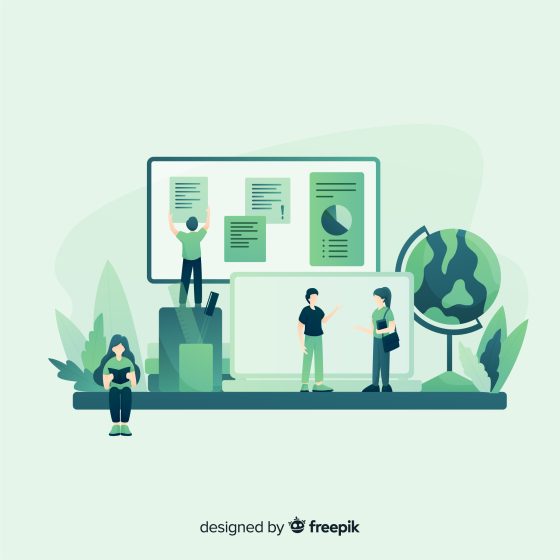
Teachers are the catalysts of change, but many feel unprepared to implement NBS due to a lack of training or confidence in outdoor or experiential learning. Professional development—especially peer-led, practical, and place-based training—can build this capacity. Embedding NBS into teacher education programmes and ongoing CPD (Continuing Professional Development) will make a long-term difference in order to enhance their own skills. This is a pathway to overcome barriers which relate to the lack of teacher training and often leads to limited exposure to NBS education for students. Although many teachers are eager to include sustainability topics and NBS activities in their teaching, they often do not feel confident yet to do so. And here is where teacher training should include hands-on, place-based experiences both for students and their educators, not just theory.
- Integrate NBS into curricula, not “around it”
Rigid curricula are often cited as an obstacle to mainstream NBS in education. NBS doesn’t have to sit outside the formal curriculum. Instead, it can be integrated into national and local standards—through interdisciplinary project-based learning, for example. Additionally, another big issue is that NBS is often treated as a “nice-to-have” rather than a legitimate teaching strategy. In teacher education, we need to reframe it as a powerful, curriculum-aligned approach that supports core learning goals—not just placing NBS as outdoor play or eco-awareness action.
- Build on supportive and network communities
A Community of CoP refers to groups who ‘share a concern, a set of problems, or a passion about a topic and who wish to deepen their knowledge and expertise in this area by interacting on an ongoing basis’ (King et al, 2023).

The collaboration between national agencies and HEIs, as well as amongst themselves, will significantly encourage the sharing of best practices and contribute towards the improvement of relevant teacher education policies in NbS education. These groups need better coordination and support, as well as mutual learning opportunities and networks to promote and upscale NBS at their contexts and across Europe.
References:
Utkarsh, S. (2023). Integrating Nature in Education: Unlocking the Potential of Transformative Learning for Sustainability. https://networknature.eu/sites/default/files/uploads/networknature-policy-brief-rd-final.pdf
King, P., Martin-Ortega J., Armstrong J., Ferré Rosalind M., Bark H. (2023). Mainstreaming nature-based solutions: What role do Communities of Practice play in delivering a paradigm shift? ELSEVIER. Environmental Science & Policy, Volume 144, June 2023, Pages 53-63. https://www.sciencedirect.com/science/article/pii/S1462901123000679#sec0010
about the writer
Gillian Dick
Gillian is the Manager of Spatial Planning – Research & Development team, Development Plan Group at Glasgow City Council. She has a BSc (Hons)Town Planning, Heriot-Watt University and BSc (Hons) Human Geography, The Open University. She is a chartered member of the Royal Town Planning Institute and is the past Chair on their Partnership and Accreditation Panel. She is the chair of the Technical University Dublin Partnership Board, and a member of the RTPI Education and lifelong learning committee. She is an Exec member of AGI Scotland and is also a member of the Scottish Landscape alliance Exec.
about the writer
Etive Currie
Etive Currie is the Place Lead for the Spatial Planning Research & Development NRS Glasgow City Council. She is the co-designer of the Scottish Place Standard Tool, and as such, she represents the Council at national, international, and global levels to talk about the place standard tool as well as run training sessions on the tool.
Gillian Dick and Etive Currie
The question is no longer whether NbS belongs in education—it’s how we make it happen, everywhere.
Nature-based solutions (NbS) in education are not a new idea—but it is a powerful one. From boosting mental health and physical wellbeing to enhancing engagement and environmental literacy, the benefits of learning in and through nature are well-evidenced. So, why, despite policy support and growing urgency around climate and wellbeing, is NbS education still not mainstream?
This paradox is particularly visible in Scotland, where progressive planning and education policies coexist with persistent implementation challenges. The Glasgow Play Sufficiency Assessment, for example, is a practical demonstration of how children’s voices can shape the spaces they use. Developed by Glasgow City Council, the assessment invites children aged 3–18 to explore and evaluate outdoor play spaces near their homes and schools. It’s not just about mapping green space—it’s about empowering children to articulate what makes a space playful, safe, and meaningful.
This aligns with the Planning (Scotland) Act 2019, which mandates meaningful and continuous consultation with young people in the development of Local Development Plans. The Town and Country Planning (Play Sufficiency Assessment) (Scotland) Regulations 2023 further reinforce this by requiring planning authorities to assess the quality, quantity, and accessibility of play spaces, with children’s input as a central component.
Scotland’s education system also provides a strong foundation for mainstreaming NbS through its commitment to Learning for Sustainability (LfS). LfS is an entitlement for all learners aged 3–18 and is embedded across the Curriculum for Excellence. It integrates sustainable development education, global citizenship, and outdoor learning—creating a holistic framework that supports place-based, experiential learning. The Scottish Government’s 2023–2030 action plan sets a bold ambition: that every learning setting in Scotland becomes a sustainable learning setting by 2030. This includes not only curriculum content but also the ethos, leadership, and physical environment of schools. Teachers are expected to demonstrate values and practices aligned with sustainability, equity, and justice, making LfS a whole-school commitment rather than a bolt-on initiative.
Yet, despite these frameworks, barriers remain. Many educators lack the training or confidence to deliver outdoor or nature-based learning. Curricula are often rigid, leaving little room for experiential or place-based approaches. Funding for green infrastructure in schools is uneven, and access to safe, high-quality green space is still a postcode lottery.
There’s also a cultural barrier. NbS is sometimes seen as a “nice-to-have”—a supplement to the “real” work of education, rather than a core part of it. This perception is reinforced when NbS is presented in technical or fragmented ways that don’t resonate with educators’ day-to-day realities.
So, how do we shift the narrative?
First, we need to reframe NbS not as an add-on, but as a foundation for learning. Nature is not a distraction from the curriculum—it is the curriculum. Whether it’s measuring rainfall in maths, exploring biodiversity in science, or writing poetry inspired by a local park, nature offers a rich, interdisciplinary canvas for learning.
Second, we must invest in teacher training and professional development. Programmes that build confidence in outdoor pedagogy, risk assessment, and curriculum integration are essential. Peer networks and communities of practice can help educators share ideas, challenges, and successes. This also needs to align with professional training for Town Planners and those who work in Spatial Planning.
Third, we need to listen to young people. The Glasgow Play Sufficiency Assessment shows how children can meaningfully contribute to planning and design. Their insights are not just valuable—they are vital. As the Scottish Government’s planning guidance makes clear, community engagement in development planning is a legal right, and that includes children and young people.
Finally, we must tell better stories. NbS professionals need to communicate in ways that are compelling, coherent, and grounded in the realities of schools and communities. That means moving beyond jargon and focusing on what matters: wellbeing, equity, climate resilience, and joy.
Mainstreaming NbS in education won’t happen overnight. But with the right policies, partnerships, and practices, we can move from pilot projects to systemic change. The question is no longer whether NbS belongs in education—it’s how we make it happen, everywhere.
about the writer
Robin Lasser
Robin Lasser produces photographs, sound, video, site-specific installations and public art dealing with environmental and social justice issues.
about the writer
Curt Gervich
Curt Gervich is the director of the Middlebury School of the Environment. MSOE is a six week undergraduate program focused on environmental leadership and sustainability. The program takes place along California’s Central Coast in the communities of Monterey, Salinas, Santa Cruz, Carmel and Big Sur. Curt is also a professor within the Center for Earth and Environmental Science at SUNY Plattsburgh. His research and applied work concerns community and regional sustainability and resilience.
Robin Lasser and Curt Gervich
Imagining Nature-based Solutions through Art and Social-ecological Systems
Educational programs that aspire to integrate knowledge, creation, and experience across traditional disciplinary boundaries and prioritize NbS, do exist.
We believe that large-scale environmental problems such as climate change, the mass extinction of biodiversity, and the intrusion of novel chemicals into the environment exist because the dominant paradigm of higher education, professional training programs, and the enterprises of environmental engineering and management rely on separation and hierarchy within the human-nature relationship. This worldview prioritizes human needs over ecological needs; disavows human interdependence with nature; seeks grand technological solutions that demonstrate human ingenuity over nature; and employs short-term measures of cost-effectiveness. Within higher education and professional training programs, this paradigm shows up as boundaries between disciplines, funding streams that fail to support transdisciplinary work, and the delegitimization of the humanities, environmental, and social sciences, against the fields of engineering and economics.
“We cannot solve our problems with the same thinking we used when we created them.”
-Albert Einstein
“We’ll go down in history as the first society that wouldn’t save itself because it wasn’t cost effective.”
-Kurt Vonnegut
Like Einstein and Vonnegut, we believe that we cannot begin to address large-scale environmental problems until we shed this paradigm for a worldview that celebrates social-ecological systems thinking and transdisciplinarity. These, however, are not things that our educational and training programs are good at, and therefore Nature-based Solutions (NbS) are often taught as secondary or supplemental treatments to human-centered technological advances.
Educational programs that aspire to integrate knowledge, creation, and experience across traditional disciplinary boundaries and prioritize NbS, do exist. Among them are the recent collaboration among Robin Lasser’s (San José State University) Art About project at Big Basin Redwoods State Park, and the Middlebury School of the Environment.
August 16, 2020, the CZU Lightning Complex Fire ignited the Santa Cruz Mountains 30 miles south of San José State University. The CZU fire burned more than 80,000 acres of forest land in and around Big Basin Redwoods State Park. The devastation was immediate, impacting the largest ancient redwood grove south of San Francisco. Four years after the wildfire Professor Robin Lasser and other artists developed the first-ever Art About program, imagining a social-ecological future for the park based on nature-based solutions and principles of resilience. You may learn more about the project at View the Art and the Big Basin Art About Short Films Collection playlist.
An example of the many artworks created for the Art About project is Lasser’s “Tent Talk” installation. According to Lasser, “Tent Talk” is inspired by Traci Bliss, author of Big Basin Redwood Forest: California’s Oldest State Park; Susan Blake, Big Basin interpreter; and Estrella Bibbey, naturalist and park volunteer. Better experienced than described, the exhibit features encampments of miniature tents, recorded stories by Bliss, Blake, and Bibbey, and accompanying large-scale postcards that are placed in ecologically and culturally significant locations along the park’s Redwood Loop Trail. The postcards mesh personal narratives and experiences of the CZU fire with park history and fire ecology. The work proposes an ecocentric and ecofeminist interpretation of the CZU fire that brings nature-based solutions to life.
In June 2025, 24 students from the Middlebury School of the Environment experienced the Big Basin Redwoods’ Art About project with Robin Lasser and Estrella Bibbey. MSOE is a six-week undergraduate summer program that focuses on sustainability, resilience, and leadership. The program operates in the Central Coast region of California, around Monterey, Salinas, Big Sur, and Santa Cruz. Students enroll in a series of transdisciplinary experiences that blend the natural and physical sciences with policy studies, humanities, and communications. Learning outcomes of the school include “seeing in systems” and “integrating learning from the social, natural, physical and geospatial sciences with arts, communications and policy to develop an appreciation of the complexity of environmental problem solving”, among others.
While on tour at the park, MSOE students witnessed the destructiveness of the CZU Lightning Complex Fire, the resilience of the redwood forest ecosystem, and the power of communicating and demonstrating nature-based solutions through Art About. While the 2020 fire scar is highly visible on the redwoods and Douglas firs within the park, one can also see substantial new growth in the under and overstories of the forest. Big Basin Park staff have instituted a number of NbS to wildfire. Among these include piling dead growth and fallen trees into burn piles that reduce the spread of fire and allow for controlled burning when the conditions are right. New park infrastructure is also designed to burn. Fencing along trails is constructed of wood and fiber, which are inexpensive and naturally available within the park. Prescribed burning is another nature-based solution to destructive wildfire.
Higher education and professional training programs are typically tightly structured to teach very specific skills. These skills and structures reinforce the dominant anthropocentric paradigm that facilitates the ecological destruction we observe today. Art About and MSOE are working to break this mold by challenging the traditional silos of higher education; teach, learn, and create with courage and beyond hierarchy; and imagine a world that operates within an integrative social-ecological paradigm.
about the writer
Sally Anderson
Sally Anderson is Associate Professor emeritus at Aarhus University in Denmark. Trained as an anthropologist in the USA and Denmark, she has worked for many years in educational anthropology, studying the moralities, socialities and relationalities children navigate in a variety of childhood learning environments. She led Work Package 5 on Education, Awareness and Participation In REGREEN (2018-2024), a Horizons 2020 project with an interdisciplinary focus on urban Nature-based Solutions.
Sally Anderson
I think NbS may play a more productive role in education if we recast them as worlding processes, as the educational work carried out by a host of others
The concept of Nature-based solutions (NbS) was launched by the International Union for Nature Conservation (ICUN), and later adopted by the EU research program Horizon 2020. Initiators aimed to promote the “uptake of NbS” in urban areas and establish Europe as an NbS world leader. Gaining prominence in academic debates and policy-making, NbS has become a flagship concept in EU research. It slips in where other terms would suffice and is widely deployed as a modifier, as in NbS experts, NbS practitioners, NbS communities, NbS education, NbS design, NbS professionals, and more.
Given the concept’s policy success and despite efforts to promote NbS in mainstream education, the concept has not yet really caught on. When looking for barriers to “NbS education”, we come up the usual suspects: insufficient funding and teacher training, inflexible curricula, and unequal access to green space. While these factors are important, a greater barrier may lie in the concept itself. Rather than placing the “problem” of mainstreaming “NbS education” in schools and with teachers, we look for the trouble in this awkward EU policy concept, asking why it doesn’t thrive in schools.
A planning concept
NbS and its accompanying jargon is an awkward educational concept―far removed from children’s lived experience. It was initially developed for urban planners concerned with the large-scale effects of climate change in large cities. As such, it brims with abstract jargon―inputs, outcomes, solutions, stakeholders, end-users, lessons learned, green infrastructure, green space, blue space, and more. To engage children’s imaginations of actual people, places, and everyday situations, this policy-speak has to be transposed into more accessible language and less abstract images.
An ambiguous concept
NbS is notoriously difficult to pin down conceptually. Scholars have struggled for decades to define NbS in relation to itself and to a profusion of existing concepts, such as ecosystem-based adaptation (EbA), urban green infrastructure (UGI), ecosystem services (ESS), natural systems agriculture, natural solutions, ecosystem-based approaches, ecological engineering, and more. None of these, including NbS, fold themselves easily into third-grade pedagogy or provide a clear conceptual ground for on-the-ground experiential learning processes.
The built-in vagueness of NbS raises many questions. What kind of “nature” and which aspects of “nature” –ecological, hydraulic, biochemical, political―are relevant to NbS? Which aspects are we ignoring? How are we distinguishing useful from harmful or irrelevant aspects of “nature”, and which kinds of problems are NbS likely to be solutions to? In considering how to make this concept experientially accessible to children, teachers may find that coexistence, cohabitation, and collaboration with other lifeforms lend themselves more directly to children’s experiences and understanding. And much that schools and teachers are already doing―planting gardens, inventorying species, planting trees and flowers, keeping hens, sheep and bees, feeding and identifying birds, depaving schoolyards and holding outdoor classes are all possible without borrowing or bowing to a concept like NbS.
An engineering concept
NbS is not a productive starting point for fostering children’s understanding of the ecological and political processes shaping and threatening their daily environments. As we know, children’s environmental learning starts in the places they inhabit and the landscapes through which they move. Walking or riding their bikes to school, children learn to avoid potholes, stay on sidewalks, use bridges to cross streams, and wait for green lights to cross busy roads near school. They may notice some things, the ice-cream shop and the chestnut tree in the square, and ignore others, the tangle of abandoned bikes and blackberry bushes near the train station. Such everyday landscapes taken together―and at once physical, social, and symbolic―are the experiential starting points of children’s environmental awareness and learning, not NbS per se. Adding NbS, we may get the following non-descript local landscapes.
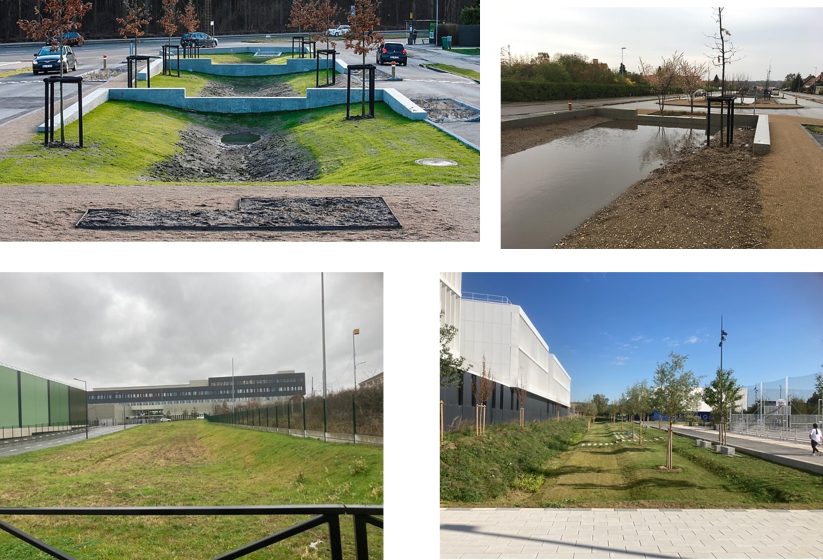
To foster children’s grasp of the importance of local places and landscapes for their learning, we can explore and take stock of neighborhoods and question how they came to look like they do. Which historical processes, ecological and political, came together to fashion these places? Whose decisions, whose design, and which conflicts shaped these everyday learning environments that continue to shape the local knowledge and environmental awareness of all inhabitants?
I think NbS may play a more productive role in education if we recast them as worlding processes, as the educational work carried out by a host of others―who unfortunately do not see themselves as educators. This host of others includes city planners, mayors, councilmen, architects, landscape architects, engineers, traffic and water authorities, land and business owners, all working together with, or against, local ecologies. Working to create multi-functional urban living spaces, to keep water and traffic flowing, children safe, construction costs down, buildings easy to heat or cool, these people are creating learning environments for all, but perhaps particularly for children who are encountering the world anew. To my mind, the concept of NbS may gain more purchase in mainstream education if we all begin to probe―together with children―how specific NbS might better serve as everyday environmental learning-scapes for present and coming generations. And then, of course, let the host of others know.
about the writer
Mário Estevens
Senior Advisor at the Division of Environmental and Ecological Intervention of Almada Municipality, Portugal. Working mostly with biodiversity conservation, ecological restoration through nature-based solutions, and education for nature and environmental awareness.
Mário Estevens
Benefiting from the overall increased environmental awareness, NbS will become more and more mainstream and will be pushed to the forefront of available practical solutions for environmental problems, as well as an inevitable topic in environmental education.
There are several reasons why NbS, although increasingly more important, are not yet considered a mainstream topic in environmental education. For once, the policy support of NbS is not always widespread as stated. In fact, it may take some time, and specially it may require some demonstration of effectiveness in particular and real situations, for NbS to be accepted and supported by policy makers as, not only viable, but also reliable solutions for some environmental problems. The actual demonstration of NbS as a viable resolution for some problems that affect people and material goods, such as flooding or coastal erosion, confers an additional importance to these solutions, which may then be regarded not only as environmental measures to enhance nature and biodiversity, but also as real measures to deal with “real” problems. However, the fact that not all environmental problems, and particularly high-risk-related problems, may be solved solely and effectively by resorting to NbS may work as a detrimental factor, reducing the importance of these solutions in the eyes of the general public and, most importantly, the policy makers.
Another issue preventing the implementation of NbS in schools is the rigidity of the curricula at some educational levels, which are sometimes entirely dependent of educational policies defined at the national level and thus not allow for the inclusion of new subject matters in a generalized way. The lack of trained professionals on NbS, most notably among teachers at undergraduate levels, is also a significant barrier, as many teachers are not knowledgeable of this subject matter and do not feel comfortable teaching it.
As more and new NbS projects become progressively implemented and are regarded as successful, presenting good results with obvious benefits also for human populations besides nature, a paradigm shift may be expected. The continuously growing understanding of the benefits of NbS by the general public, both environmental and economic, will result in a better-informed population that will eventually demand from the policy makers the implementation of such measures, which may be prioritized over more traditional grey solutions. Benefiting from the overall increased environmental awareness, NbS will become more and more mainstream and will be pushed to the forefront of available practical solutions for environmental problems, as well as an inevitable topic in environmental education.
about the writer
Isabel Ruiz-Mallén
Associated professor at the Faculty of Psychology and Educational Sciences at the Universitat Oberta de Catalunya (UOC) and the Director of the Laboratory of Urban Transformation and Global Change (TURBA) at UOC. Her main research interests lie in knowledge co-production and transformative learning behind formal and informal educational processes related to socio-ecological issues.
about the writer
Francesc Baró
Francesc Baró is an Asst. Professor and Director of a research lab at Vrije Universiteit Brussel (VUB), specializing in urban ecology, environmental justice, and nature-based solutions. With a PhD in Environmental Science and Technology, his work advances interdisciplinary environmental science through research on urban ecosystem services and green infrastructure.
Isabel Ruiz-Mallén and Francesc Baró
There is no standard recipe for creating successful nature-based schoolyards. But there is a common requisite for maximizing the transformative potential of these NbS interventions in school grounds.
NbS education can be fostered through greening schoolyards for climate adaptation. As the European COOLSCHOOLS research project has demonstrated across four European cities, implementing NbS in schoolyards can increase children’s learning opportunities and their contact with nature regardless of their socioeconomic status while improving their well-being. Green schoolyards can also reduce gender inequalities in children’s play and foster urban ecological connectivity. These benefits, including ecological, social, and pedagogical aspects, have an impact beyond the school setting where the NbS intervention has been implemented, reaching the neighbourhood or even the district scale.
Yet, not all NbS on school grounds and in the broader school environments succeed in generating these benefits. There are significant challenges to overcome when designing, implementing, and maintaining green and blue school grounds. For instance, how to balance different interests and preferences regarding the uses of schoolyards between various actors, like when some students, parents, and teachers want to keep hard, grey grounds for playing sports like football or skating, while others ask for removing concrete surfaces and having sand, grass, or other natural pavements and planting vegetation. Also, how to ensure long-term maintenance of school green spaces and increase their educational use and its integration into the school’s curriculum planning remains a challenge in many cities.
There is no standard recipe for creating successful nature-based schoolyards. Each school is defined by its structural characteristics and immersed in a socioeconomic and climatic context that shapes the transformation and its impact. But there is a common requisite for maximizing the transformative potential of these NbS interventions in school grounds, especially related to NbS education: it demands a paradigm shift at both pedagogical and social levels in how teachers, parents, landscape architects, and municipal technicians understand the urban environment, towards being (re-)connected to and with nature. When nature is no longer perceived and treated as an object and is instead granted its own agency—through activities and practices that actively listen to and incorporate the natural world as part of the student’s learning process—new relationships with the school environment can be established, recognizing nature’s role as a co-educator.
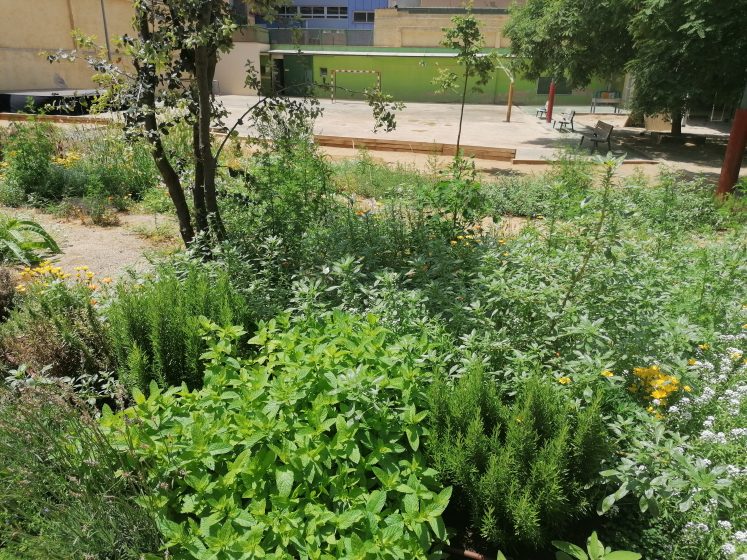 Thus, greening schoolyards does not simply mean adding natural elements like trees, fountains, or sand but rather envisioning them as new learning spaces within the school settings. This involves framing their design, implementation, and management as a pedagogical opportunity. The whole-school approach to sustainability facilitates the integration of NbS education across all dimensions of the school (curriculum, teacher training, infrastructure, etc.). To create such a culture of sustainability, the entire school community―including students, teachers, parents, and other school-related stakeholders―should participate in the design of the new schoolyard, with an emphasis on including the voices of students in decision-making and their active involvement in its maintenance. In doing this, nature-based schoolyards will better respond to their needs and interests regarding access to and contact with natural elements, which creates the path for NbS education to flourish.
Thus, greening schoolyards does not simply mean adding natural elements like trees, fountains, or sand but rather envisioning them as new learning spaces within the school settings. This involves framing their design, implementation, and management as a pedagogical opportunity. The whole-school approach to sustainability facilitates the integration of NbS education across all dimensions of the school (curriculum, teacher training, infrastructure, etc.). To create such a culture of sustainability, the entire school community―including students, teachers, parents, and other school-related stakeholders―should participate in the design of the new schoolyard, with an emphasis on including the voices of students in decision-making and their active involvement in its maintenance. In doing this, nature-based schoolyards will better respond to their needs and interests regarding access to and contact with natural elements, which creates the path for NbS education to flourish.
In addition to collaborative work and the active participation of students in the co-design and implementation of NbS in schoolyards, the mainstreaming and consolidation of NbS education processes requires a long-term capacity-building approach. Teachers need more lifelong learning training on teaching outside the classroom so they acquire the skills to improve their confidence and motivation around outdoor learning. Through establishing collaborations with NGOs or community associations working on environmental education can find extra support. Teachers also need institutional support, both at the national curriculum level and from relevant education authorities, who should recognize the pedagogical value of NbS education in naturalized schoolyards.
about the writer
Chris Fremantle
Chris is a researcher and producer working across environment and health. His research focuses on the pioneering ecological artists Helen Mayer Harrison and Newton Harrison who he also worked with. He is currently exploring artists’ projects with trees, woods and forests. Chris is a Research Associate with TNoC’s naturePLACE supporting evaluation approaches.
Chris Fremantle
Nurturing Nature-based Solutions means nurturing a shift of consciousness.
In about 1970, Helen Mayer Harrison and Newton Harrison, the one an established artist and the other a senior educator, committed to “doing no work [making no art] that did not attend to the web of life.” It took them probably 10 years to work out what this commitment meant and to teach themselves about the web of life. During this time, they became “the Harrisons”, two artists working together to invent a practice that integrated art and ecology.
Over the next 50 years, they were invited to places, mostly in the US and Europe, where they were asked to address ecological challenges. They created works that put ecosystems first in decision-making. The Harrisons were more interested in what policy makers and land managers, city officials, and environmentalists thought than the opinion of the artworld (although they continued to periodically present their projects at their Manhattan Gallery). The scale of the projects grew, from experimenting with putting ecological systems in galleries (which basically all failed), through working with cities, to a continental scale. The projects also tracked understandings of ecology: for a long time through the 1980s and 1990s, their focus was on proposals that would reestablish ecological stability, but by the mid-2000s, they recognised the scale and momentum of the climate and biodiversity crisis. Their focus shifted to social ecological adaptation, still putting the web of life first.
Their involvement in education in the widest sense started before their collaboration as artists. They co-authored an essay in 1965 on pedagogy for young people who were failing in mainstream education. It was focused by some key questions. They begin with “What are you most afraid of?” and move to “Why is everything as it is? […] How would you like the world to be? What do you have to do with the world? What does the world have to do with you? […] What is the meaning and function of a good environment? Health? Food? Effective childcare? What is the role of the parent? Why use decoration or plan for visual effect? Why plan? How can we handle money? Time? Energy? Leisure? What is the value of continuous inquiry? Why keep an open mind?” (H. M. Harrison and Harrison 1965, 176). This essay was based on their experiences teaching at a Settlement House in the early 1960s in New York.
Curiously, although the Harrisons were teaching at the University of California, San Diego[1], the pedagogy aligned with their art and ecology practice is mostly evident in activities associated with projects. Throughout their papers are short educational projects forming parts of the projects. These are focused by the challenge of nurturing an ecologically literate society ‘What might students find useful to know in order to engage eco-political or eco-social issues from a profoundly ethical perspective?” The Harrisons believed that it was critical to have ‘an ennobling problem”―something which it was self-evidently good to do, even if it was not clear how to do it.
They argued, “Ethical creativity, from our perspective, operates exactly in the same way as nature. That which is created, in acting toward its own wellbeing, also acts toward a larger whole. Its waste generates well-being in parts of a larger whole.”
They recognised that there are “domains of literacy” that are students need to acquire―these cross art and design, humanities, psychology, and different aspects of ecological sciences―processes associated with information and belief. Understanding the “beliefs” that organise human culture―the stories we tell ourselves―was for the Harrisons key to shifting consciousness towards the well-being of the web of life.
These days, many of the Harrisons’ projects propose things that we would recognise as Nature-Based Solutions, e.g., Nature Corridors in Green Heart Vision in Holland (1984). Wetlands to purify river systems in Breathing Space for the Sava River (1989) in the former Yugoslavia. Meadows instead of parks in Endangered Meadows of Europe (1994) in Germany. Check Dams in the work Santa Fe Drain Basin: Lessons from the Genius of Place (2002-2005) in New Mexico. But to focus on the Nature-based Solutions is to miss the need for a shift of consciousness, a leap of the imagination, to understand ourselves as a part of natural assemblages, and to ensure we are putting as much back into the web of life as we are taking out.
The Harrisons were never afraid of failure: as with most artists, they deemed very few of their works “successful”. They always asked difficult questions, and they always sought to enable us to imagine a way of life in sync with the web of life. Nurturing Nature-based Solutions means nurturing a shift of consciousness.
This piece draws on ‘Thinking with the Harrisons: Re-imagining the arts in the global environment crisis’ co-authored by Anne Douglas and Chris Fremantle and published by Leuven University Press in 2024, and on ‘Ecoart in Action: Activities, Case Studies, and Provocations for Classrooms and Communities’ edited by Amara Geffen, Ann Rosenthal, Chris Fremantle and Aviva Rahmani and published by New Village Press in 2022.
[1] Helen resigned as Director the Extramural Programme to concentrate on art in the early 70s. She was rehired as the first jointly held Professorship with Newton in the early 1980s.
about the writer
Richard Johnson
In 2018, Richard founded Chess Angels Promotions Inc., an art-based nonprofit organization dedicated to inspiring and empowering communities through action, education, and self-expression. His work has brought art into public spaces as a tool for dialogue, healing, and change. In 2023, he joined the Board of Directors for Commonwealth Murals, helping shape a city that now boasts over 75 vibrant public murals. Richard teaches science at Aspire Academy highschool, where his mission aligns with the school’s vision to create a personalized pathway that caters to the needs of every student. His dedication to youth development is fueled by a belief that education, creativity, and community engagement are powerful catalysts for personal and collective growth.
Richard Johnson
If we want NbS to be a cornerstone of education, we must rethink what we teach as much as where we teach.
Despite growing research on Nature-based Solutions (NbS) in education showing enhanced student well being, increased academic engagement, stronger environmental literacy, and deeper community connection, NbS is still not mainstream. This is not because evidence is missing but because systemic, structural, and cultural barriers prevent widespread adoption. Research indicates that outdoor learning supports mental health, cognitive function, and community building, especially among students from ethnic minority and low-income backgrounds.
One major barrier is a lack of teacher preparation and confidence. Most educators are not trained to teach outdoors or use nature as a teaching tool. Their preparation programs rarely include ecological literacy or environmental pedagogy. As a result, many teachers feel unsure about aligning NbS with curriculum standards or managing learning in natural settings. Studies show that a lack of confidence is the biggest obstacle in bringing lessons outside, even when space is available.
Another barrier comes from curriculum rigidity. Education systems focused on standardized testing favor indoor and textbook-based instruction. That means NbS is often treated as optional rather than essential to student growth. Research highlights that crowded curricula and administrative barriers often leave little room for creative outdoor teaching.
Funding and infrastructure inequality also limit adoption. Under-resourced schools may lack green space, outdoor classrooms, or materials for nature-based learning. Urban areas and communities affected by environmental injustice often lack safe access to nature. Surveys show these gaps deepen inequities in learning opportunities.
Logistical constraints and liability concerns complicate outside learning. Transport scheduling, permissions, safety fears, and weather issues discourage teachers from planning regular outdoor lessons.
Finally. NbS experts often communicate in conservation language rather than education outcomes. If teachers do not see explicit connections to learning objectives and standards, they may dismiss NbS as irrelevant or impractical.
My plan for integrating NbS in education
As an educator committed to equitable and inclusive learning, I propose:
- Integrate NbS into teacher preparation and ongoing professional development so educators build confidence and skill teaching outdoors
- Embed NbS into policy and curriculum by treating outdoor learning as essential, aligning it with academic standards across all subjects
- Ensure equitable investment in green infrastructure—including outdoor classrooms, school gardens, and safe natural spaces in underserved schools—through strategic funding and partnerships
- Co-create curriculum materials with NbS professionals to support core academic goals in local nature contexts
- Foster collaboration between teachers and NbS experts using shared language, clear alignment to standards, and concrete case studies with real-world impact
Why this integration matters
When NbS becomes integral to education rather than optional enrichment, we create transformative learning environments. Students benefit from hands-on learning that enhances focus, creativity, and social skills.
Equity improves when all students have consistent access to nature-based opportunities regardless of socio-economic status. Educators gain confidence and feel supported rather than
overwhelmed. Communities become stronger through shared stewardship of school green spaces.
If we want NbS to be a cornerstone of education, we must rethink what we teach as much as where we teach. By reallocating resources, designing policy, and developing curriculum that recognizes nature as a classroom, we prepare students not just for tests but for life in a changing world.
about the writer
Benginur Baştabak
Benginur Baştabak is an agricultural engineer working in Türkiye. With a background in agricultural engineering and nature conservation, she focuses on community-based resilience projects, sustainable land use, and nature-based solutions in degraded landscapes.
about the writer
Elif Gödekmerdan
Elif Gödekmerdan is with a background in environmental engineering and a master’s degree in biomass energy, she have extensive experience in green technologies, hydrogen energy, and sustainability-focused soil rehabilitation.
about the writer
Çiler Çilingiroğlu
Ciler is a researcher of Anatolian prehistory with a special focus on Epipaleolithic, Mesolithic and Neolithic periods. Her research mainly focuses on the Neolithization processes of southwest Asia, Mediterranean, and Europe. In September 2021, she established the Ege University Anthropocene Research Group.
Benginur Baştabak, Elif Gödekmerdan, and Çiler Çilingiroğlu
We Plant Ideas Too: Why Rural Communities Must Lead Nature-Based Education
Nature-based education must be rooted in local leadership—especially from rural communities.
In Anatolia, agriculture has always been more than food production. The long-term process of becoming sedentary and the ensuing agricultural practices at the beginning of the Holocene are all intertwined with culture, memory, ideology, and social life. The region that now forms modern Türkiye is not only rich in biodiversity but also known as the cradle of agriculture itself. The wild progenitors of many of the cereals and legumes we consume today were initially cultivated in the foothills of the Taurus Mountains. Also, livestock animals such as pigs, cattle, and sheep were first domesticated in the same area. Sites like Göbeklitepe and Karahantepe, dating back over 11,000 years, demonstrate that sedentary foragers intensified their interrelationships with cereals that served to offer not only bread and porridges but also fermented beverages for ceremonies and communal feasts. Around 8500 BCE, Aşıklı and Boncuklu emerged as sedentary communities in Central Türkiye with an emergent agricultural component in their subsistence. Cereals and legumes were cultivated on a small scale, and caprines were being kept inside the settlements as part of the path to full domestication. Full-scale farming communities are dispersed all across Anatolia around 7000 BCE, with Çatalhöyük being one of the most prominent examples where founder crops of the Neolithic were cultivated alongside a major component of caprine management, hunting, fishing, and foraging.
These sites are more than archaeological wonders. They are evidence of how co-learning and co-existing with nature have always gone hand in hand. Türkiye’s agricultural history is not a museum piece; it is a living legacy, found in practices such as seed saving, communal irrigation systems, storage practices, traditional composting, seasonal calendars, and food processing—all of which still exist in villages today.
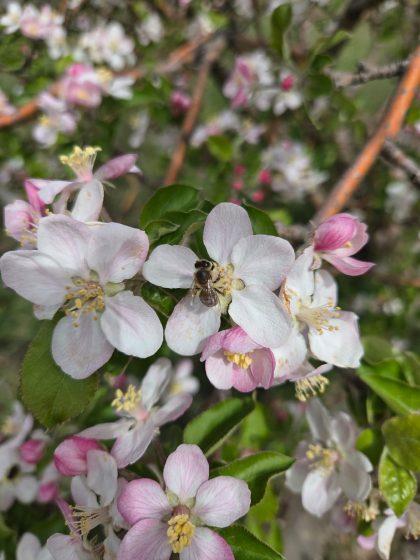
Yet today, we find that these communities, rich with ecological wisdom, are rarely included in conversations about nature-based education. Across Türkiye, rural children learn about birds, plants, weather patterns, and soil conditions not through formal curricula but by participating in everyday life—walking with elders, working in gardens, listening to folktales. Women share herbal knowledge and seed varieties that have adapted to drought, pests, and poor soil. These are all, in essence, forms of nature-based education.
So why aren’t they recognized as such?
Mainstream education tends to be centralized, standardized, and often disconnected from place. Even well-intentioned Nature-Based Solutions (NBS) programs often originate in urban or institutional centres. They speak of “greening” schools but ignore the fact that many rural schools already exist within green ecosystems. The problem is not a lack of nature—but a lack of recognition for rural pedagogies.
What we need is a paradigm shift. Nature-based education must be rooted in local leadership—especially from rural communities. These are not just the beneficiaries of ecological education; they are its architects.
To make NBS in education truly inclusive and impactful, we must:
- Expand our definitions of education to include informal, seasonal, and oral knowledge systems.
- Empower rural actors—farmers, cooperatives, elders—as co-designers of education models.
- Protect and invest in traditional ecological knowledge, not as folklore, but as climate-smart strategy.
Ultimately, rural communities do more than cultivate food; they cultivate the meaning, memory, and methods of living with change. Their knowledge is not static—it is adaptive, resilient, and deeply relational.
To overlook this is to miss out on one of our most valuable educational resources. Yet, to genuinely and equitably incorporate it is to cultivate a new kind of future—one with deeper roots.
about the writer
Dara Lee
Dara is a Manager of the IUCN Academy, which harnesses IUCN’s global expertise to deliver innovative learning journeys for professionals, postgraduate students and leaders eager to make a meaningful impact in nature conservation.
about the writer
Nasim Farahani Zayas
Nasim is a Programme Officer at the IUCN Academy, where she develops and delivers educational programmes, collaborates with partner universities, and supports capacity-building initiatives across IUCN Centres. With a background in biology, she holds a Master’s in Biotechnology from Wageningen University and a PhD in Molecular Life Sciences from the University of Lausanne.
Dara Lee and Nasim Farahani Zayas
By equipping people to recognize and apply NbS in their own lives and professions, we can make it a natural part of how we learn, build, and live.
NbS are often recognized in theory—people know the term, sense its relevance—but there’s still a disconnect in how to engage with it practically. They can feel distant or overly complex. Our job is to demystify it: to reframe NbS from an abstract concept into something tangible, familiar, and embedded in everyday life. In fact, many of us have encountered or even implemented NbS without realizing it.
So where do we start?
We begin by making NbS more accessible and actionable. A key step is adopting clear, shared frameworks—like the IUCN Global Standard for NbS—which provide practical guidance to design, assess, and communicate NbS consistently. These frameworks are essential for creating common ground among stakeholders. Without them, it’s difficult to align efforts, and even harder to attract and direct funding effectively.
Another key challenge is education. Education systems often resist change—not necessarily due to a lack of budget or time, but because of the inertia of established methods. Integrating NbS into curricula means embracing change, and change is rarely straightforward—it can feel like facing a monster with seven heads. But it’s possible. Supporting educators with ready-to-use materials, training, and real-world examples can make this transition more feasible and less intimidating.
Interdisciplinary and interregional collaboration is particularly important to integrate in curricula. But in practice, it’s hard. Disciplinary silos, institutional boundaries, and diverse stakeholder interests make collaboration challenging. Education must prepare learners to navigate these realities—to think across sectors, cultures, and disciplines. Initiatives like the Professional Certificate on Measuring and Monitoring Urban Nature, paired with the Professional Certificate on the IUCN Global Standard for NbS, are great examples of how to build this capacity. They provide a platform for experts and learners across disciplines to connect, share, and adapt solutions to diverse local contexts. For instance, a solution piloted by a social enterprise in Cape Town might serve as inspiration for a city planner in São Paulo. These programs don’t just build technical knowledge; they cultivate essential skills like collaboration and systems thinking skills that are vital because NbS projects often bring together scientists, urban planners, community leaders, and others.
Ultimately, mainstreaming NbS in education means making it clear, relatable, and practical. It means showing that NbS isn’t just a novel concept for the future—it’s deeply rooted in the past and urgently needed in the present. By equipping people to recognize and apply NbS in their own lives and professions, we can make it a natural part of how we learn, build, and live.
about the writer
Bongiwe Simka
Bongiwe is a sustainability professional with a passion for environmental justice and the intricate dynamics of human-environmental interactions. As a seasoned environmentalist, she envisions a world where biodiversity and thriving ecosystems are at the heart of development. In her role as Professional Officer: Nature & Nature-based Solutions at ICLEI Africa, Bongiwe supports cities in Africa in their transition towards a more sustainable development trajectory, advocating for the mainstreaming of biodiversity considerations into how we plan with and make decisions about our cities.
Bongiwe Simka
To mainstream NbS in education, we must move from buzzwords to lived experience.
Please Mind the (Language) Gap
Language is one of our most powerful tools. It is how we teach, learn, connect, and make sense of the world around us. Yet, it can also act as a barrier, excluding and silencing the very people we hope to reach, and/or mostly those directly affected. When it comes to Nature-based Solutions (NbS), this duality of language sits at the heart of a paradox: while the evidence supporting nature-based solutions is exceedingly becoming clear, its uptake, particularly in education, remains limited. Why?
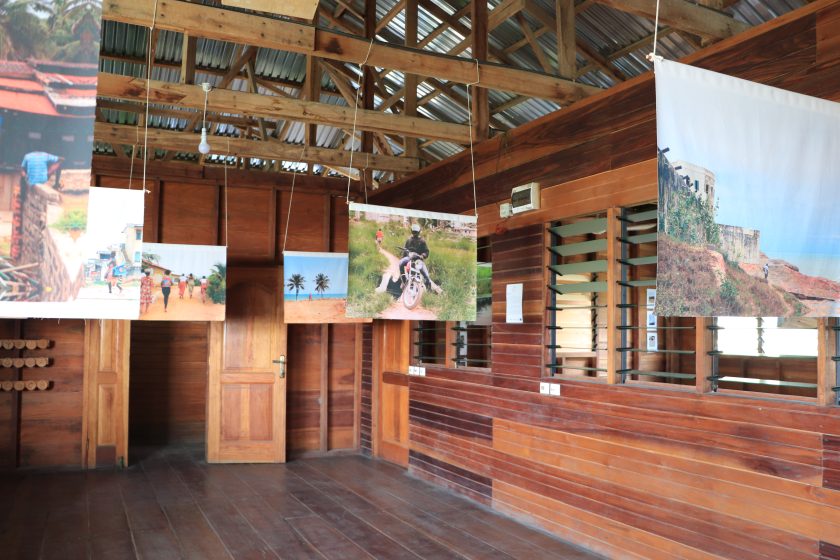
In recent years, NbS has gained global traction as a promising approach to addressing climate, biodiversity, and social challenges in an integrated way, benefiting people and nature. At the outset, the dialogue on NbS was driven largely by the Global North, while Global South voices raised wide-ranging concerns and reservations about NbS. This initial disconnect shifted after the adoption of Resolution 5 on Nature-based Solutions for Supporting Sustainable Development at UNEA 5 in early 2022.
The term itself is often confusing, technical, and unfamiliar to many, including practitioners themselves. It was introduced not to reinvent how we relate to nature, but to unify a range of existing practices under one umbrella. And yet, what was meant to unify has alienated, leaving behind communities that have long worked with nature but never called it by this name.
This is especially true across many African societies, where nature-based ways of living and learning are deeply rooted in cultural memory and indigenous knowledge. These ways predate the term NbS by centuries. But because they are not always articulated in formal policy or academic language, they are often overlooked, dismissed, and forgotten. A simple conversation with elders or local community members frequently reveals the disconnect: “We were doing this long before it had a name.” So, who, then, gets to name the relationship between people and nature, and why does it matter?
If we want to bring NbS into classrooms and community spaces, we must first recognize that the language we use has the potential to open doors or close them, leaving people behind. The challenge is not only about rigid curricula or lack of training, it’s about communication, language, and the narrative we choose. If the concept of NbS is locked behind jargon and policy language, how can we expect teachers, learners, or local communities to see its relevance to their daily lives?
Through the SwedBio-funded Urban Natural Assets (UNA) project, ICLEI Africa has been exploring language as a gateway to more inclusive NbS education. One promising approach is vernacularization, the practice of translating complex concepts into everyday language, stories, and symbols that people can relate to. Vernacularization leans on context to link what’s considered “new” to historical ideas and practices. It aims for cultural interpretation. It means finding connections to what communities have always known: planting trees to shield homes from wind, preserving wetlands, sharing fireside chats and mythical tales that pass down wisdom about respecting and protecting nature. These narratives are more than folklore; they are entry points to understanding and teaching NbS in ways that feel familiar, rooted, and actionable. They connect generations, spark memory and curiosity, ultimately bridging formal and informal education.
To mainstream NbS in education, we must move from buzzwords to lived experience. This means investing in storytelling, local knowledge systems, intergenerational and youth-led innovation that reframe NbS in terms that resonate across generations and geographies. We need to make room for multiple ways of knowing, creating space in the classroom and in curricula for the wisdom of communities alongside the insights of scientists. The way forward is not to simplify and mould NbS into one fixed message, but to diversify how we talk about it because context is key. To make NbS truly mainstream in education, we need to speak to people, not around them, embracing stories, place-based knowledge, and local languages, making it a shared practice anchored in social realities.
about the writer
Colleen Murphy-Dunning
Colleen Murphy-Dunning is Executive Director of both the Hixon Center for Urban Sustainability and the Urban Resources Initiative (URI) at the Yale School of Environment (YSE). URI carries out community-driven urban forestry to improve both the social and physical environment of the City of New Haven.
about the writer
Marufa Sultana
Marufa Sultana is an urban ecologist with expertise in wildlife biology, biodiversity conservation, and nature-based solutions, and has experience in both academic and non-academic sectors. She is currently a postdoctoral fellow at the Institute for Technology Assessment and Systems Analysis (ITAS) at the Karlsruhe Institute of Technology, where her research focuses on exploring solutions for co-designing future sustainable cities for both people and wildlife. Marufa earned her doctorate in natural sciences from the University of Freiburg, Germany. Prior to her current role, she worked on nature-based solution projects at ICLEI Europe and contributed to biodiversity and ecosystem conservation initiatives at IUCN in Bangladesh.
Colleen Murphy-Dunning and Marufa Sultana
Designing NbS curriculum to connect to the interests of the audience can make NbS education more compelling.
Making Nature-based Solutions Education Compelling by Tapping Excitement for Nature
Have you noticed how nature excites people, especially in cities? There are countless examples across the world that can help us to recognise and utilise nature’s intrinsic importance in Nature-based Solutions (NbS) education.
Whether it is to see a panda, penguin, or polar bear, people love to go to zoos in cities, with over 148 million annual visits in Europe (as reported by European Association of Zoos and Aquaria). Why? Because people are curious and feel an innate emotional connection to nature.
In Australia, the City of Melbourne assigned email addresses for the city’s 70,000 trees as a means for the public to report maintenance concerns. Residents not only emailed to raise maintenance concerns, but also thousands of people sent love letters expressing their gratitude to trees for their beauty, shade, and more. Subsequently, other cities have launched similar initiatives with overwhelmingly positive public response of sharing their emotional bonds with trees.
Scientists in cities such as Chicago, NYC, Detroit, and others across the US have set up web-based cameras monitoring Peregrine falcons to observe their behaviors and recovery from once being near extinction. Today, the Peregrine falcons are thriving in cities, and these webcams have offered a means for the captivated public to witness the falcons nesting, egg-laying, and chick-rearing via livestream. Similarly, the German public watches livestream footage of nesting White Storks.
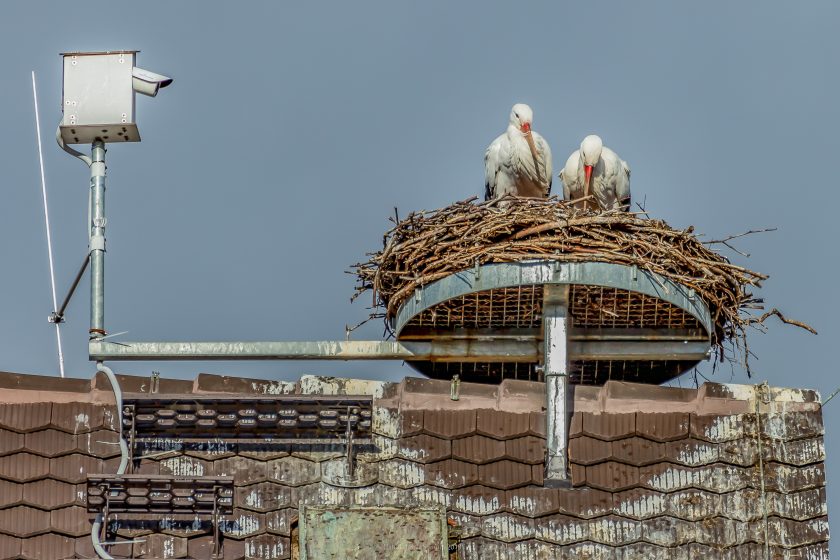
Beyond these public engagement examples of people valuing nature’s inherent importance, there are also countless individual stories. Like Max, who lives in one of Germany’s greenest cities, owns a small private garden. Out of curiosity, not for any scientific purpose, he sets up a wildlife camera trap in his garden to see what animals visit at night. Each new observation he eagerly shares with his neighbours and friends, showing when and which animals are coming. Living nearby, an elderly resident, Margarete, makes it a habit during hot summer days to water the trees planted by the municipality along the streets in front of her house. Nobody told her to do so. But she does this with care and passion, expecting no return.
In contrast, Sayema, who lives in Dhaka, has limited access to green spaces. She has created her own oasis by gardening on her balcony and rooftop. She often posts photos on social media of her plants and even birds like sparrows nesting in her plant pots. Gardening clearly gives Sayema joy, demonstrating her desire to connect with nature.

Given this evident desire, NbS education may be better understood and appreciated by the public if it is presented in tangible terms. Describing that NbS can improve resilience to climate change, biodiversity, and ecosystem services presents nature as an abstract concept. If instead NbS are portrayed more directly, such as how a tree provides habitat for animals and shade for people, the public may be more responsive.
Imagine if NbS education can become a knowledge co-creation pathway where students, practitioners, and residents work together on local ecological problems, which also personally excites them. For instance, in the US, volunteers working alongside students create a food forest with a focus on urban wildlife, tapping their passions. This serves dual goals of NbS implementation and education. Providing these first-hand opportunities also allows the public to actively learn how nature responds to human interventions (i.e., NbS implementation).
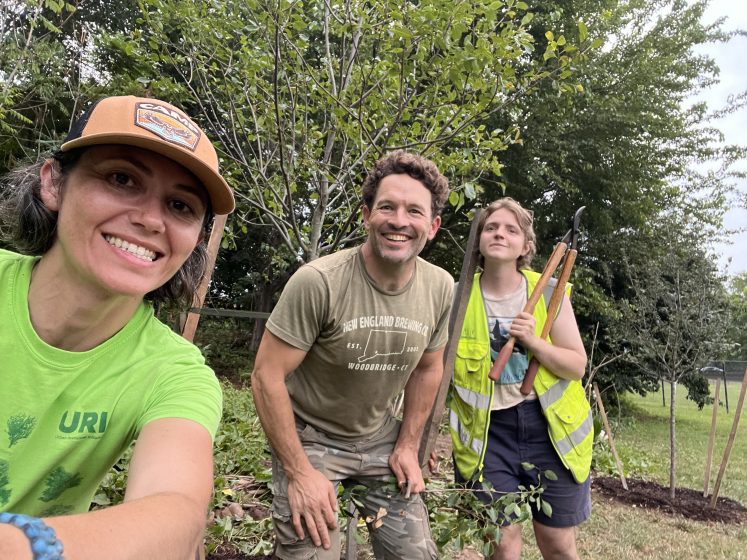
Designing NbS curriculum to connect to the interests of the audience can make NbS education more compelling. It provides city residents the opportunity to both absorb knowledge and help generate it. Educators, in turn, become guides and facilitators who create pathways to inquiry through innovative, flexible courses. This approach may advance NbS education to become more mainstream.
about the writer
Marianne Krasny
Marianne Krasny is professor in the Department of Natural Resources, Director of the Civic Ecology Lab at Cornell University, and a contributor to Forbes News.
Marianne Elizabeth Krasny
Chocolate, Agroforestry, and Family Learning
What better way to bring families together to learn about nature-based solutions than through something they love―chocolate?
What might education for nature-based solutions (NbS) look like if it focused on something children, teachers, and parents love: Chocolate?
Before I explore this possibility, I wanted to challenge the question framing this roundtable. Why would scientists think NbS should be incorporated into the K-12 curriculum? For the 35 years I have worked in environmental education, environmental educators have faced the challenge of trying to incorporate environmental topics into school curricula. While some progress has been made―20 states had implemented environmental literacy plans as of 2019―this has occurred only after prolonged advocacy by the North American Association for Environmental Education and its state affiliates. Yet, environment is a household term―not so for “nature-based solutions”. So, while I applaud efforts to incorporate NbS into K-12 education, the strategy might be to partner with organizations experienced in educational advocacy or to focus on out-of-school programs not constrained by government education standards.
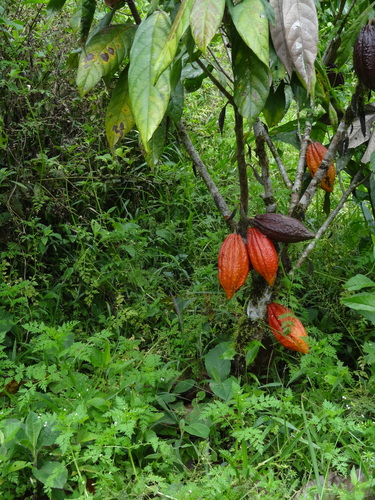
Chocolate as a “treat” to capture students’ attention
Let’s get back to chocolate. This topic is of interest to just about everyone, and it can be used to teach across disciplines. Here are some examples:
Economics, social studies, biology, environment. Teachers could ask students to investigate why Nestle’s announced in June that it was raising its prices on Kitkat and Butterfingers. How much of the cost is due to labor? How much is due to crop failures associated with climate change-related disasters like droughts, extreme heat, and crop diseases?
History, chemistry. Students could explore how, in Peru’s Huaca Montegrande Temple, archeologists have uncovered pots with residues of cacao―evidence that cacao was used as a sacred food 4000 years before the Egyptian pyramids were built. Wild cacao originated in the Amazon forests of Ecuador and Peru, and spread through trade northward to Central America before the Spaniards arrived. Today, cacao is valued for its taste and for medicinal uses, including as an anti-inflammatory.
In fact, the Rainforest Alliance has created “beans to bar” fact sheets, which use chocolate to teach students about biology, economics, and where their food comes from.
Deforestation and Nature-based Solutions
Today, Ivory Coast and Ghana account for 60% of the world’s cocoa. Unfortunately, these West African countries have lost 80-94% of their forests over the last 60 years. One-third of that loss was from tropical rainforest cut down to grow cocoa. As forests are cut down, massive amounts of CO2 previously stored in the trees and soils are released into the atmosphere. The problem is compounded because live trees that would have continued to absorb carbon from the atmosphere are gone. According to the Environmental Defense Fund, deforestation contributes 20% of annual greenhouse gas emissions.
In fact, 47 kg/CO2-eq are emitted into the atmosphere per each kg of chocolate consumed. This makes chocolate the second largest CO2-eq emitter, about half as bad as beef (99 kg CO2-eq) and twice as bad as cheese (24 kg C02-eq). Whereas those pesky methane burps are the largest source of cow emissions, deforestation is the culprit in the case of chocolate.
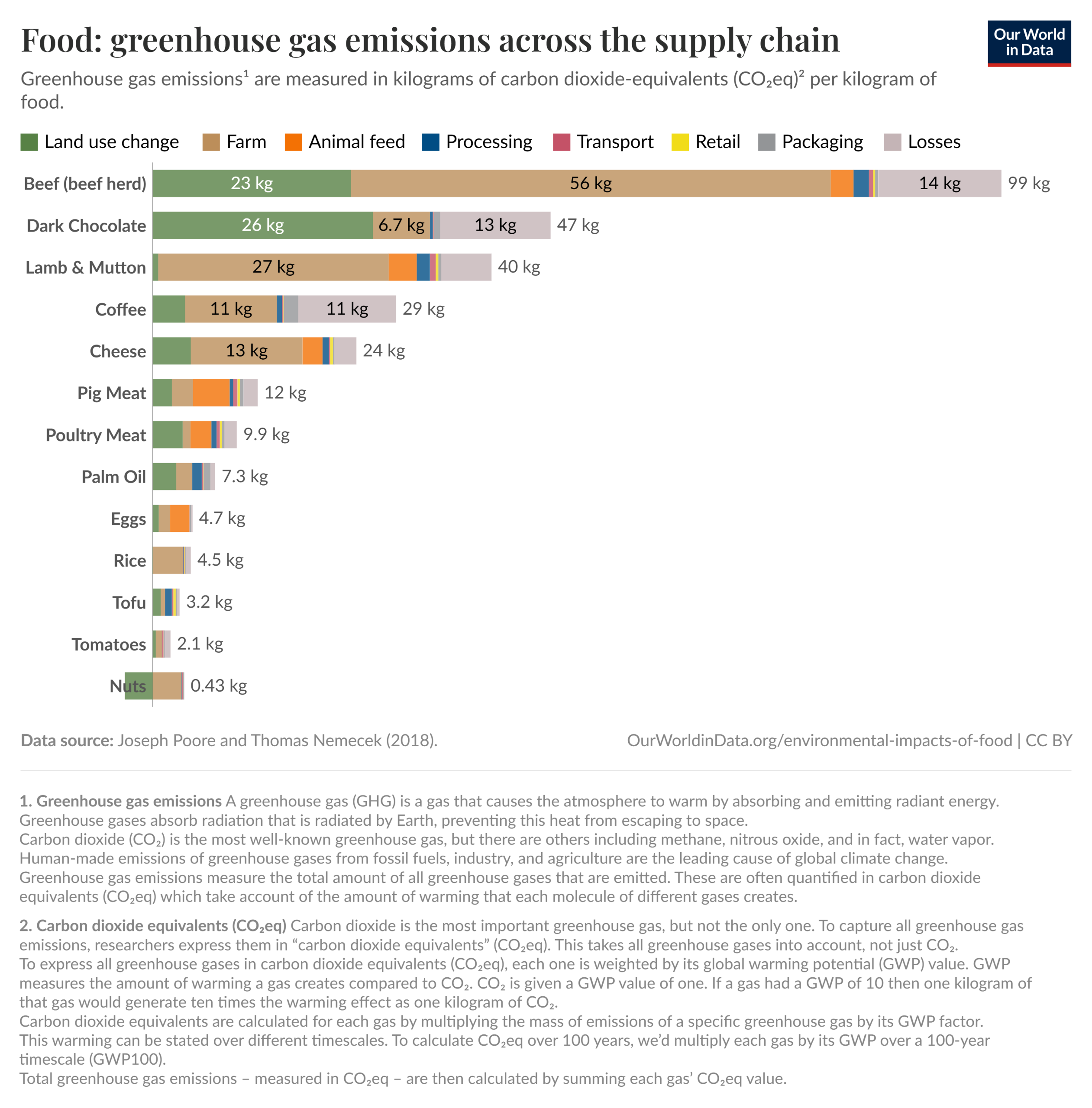
But chocolate lessons don’t just have to talk about the “bitter” side of cacao and chocolate. They can also cover the “sweet” solutions. Sergio Lira, a student in my Food, Farms, and Climate online course, decided he had had enough of city life and bought a barren property in a remote area of the Amazon basin. He took advantage of cacao trees growing in the wild, and began processing cacao into chocolate. He and his neighbors are also creating agroforestry systems to transform the barren land into a vibrant ecosystem.
Agroforestry―that is, planting cacao trees along with other crops such as bananas, avocados, rice, mangos, and citrus―is seen as a tool to slow deforestation caused by our insatiable appetite for chocolate. Compared to plantation-grown cacao, agroforestry systems have been shown to store 2.5 times more carbon and, when all crops are added up, produce ten times as much as monoculture cacao plantations. Farmers in Madagascar working with the small chocolate producer Beyond Good practice agroforestry, in which cacao trees are interspersed with 85 species of flora and fauna, including five species of endangered lemurs. In short, agroforestry is both a climate and a biodiversity nature-based solution.
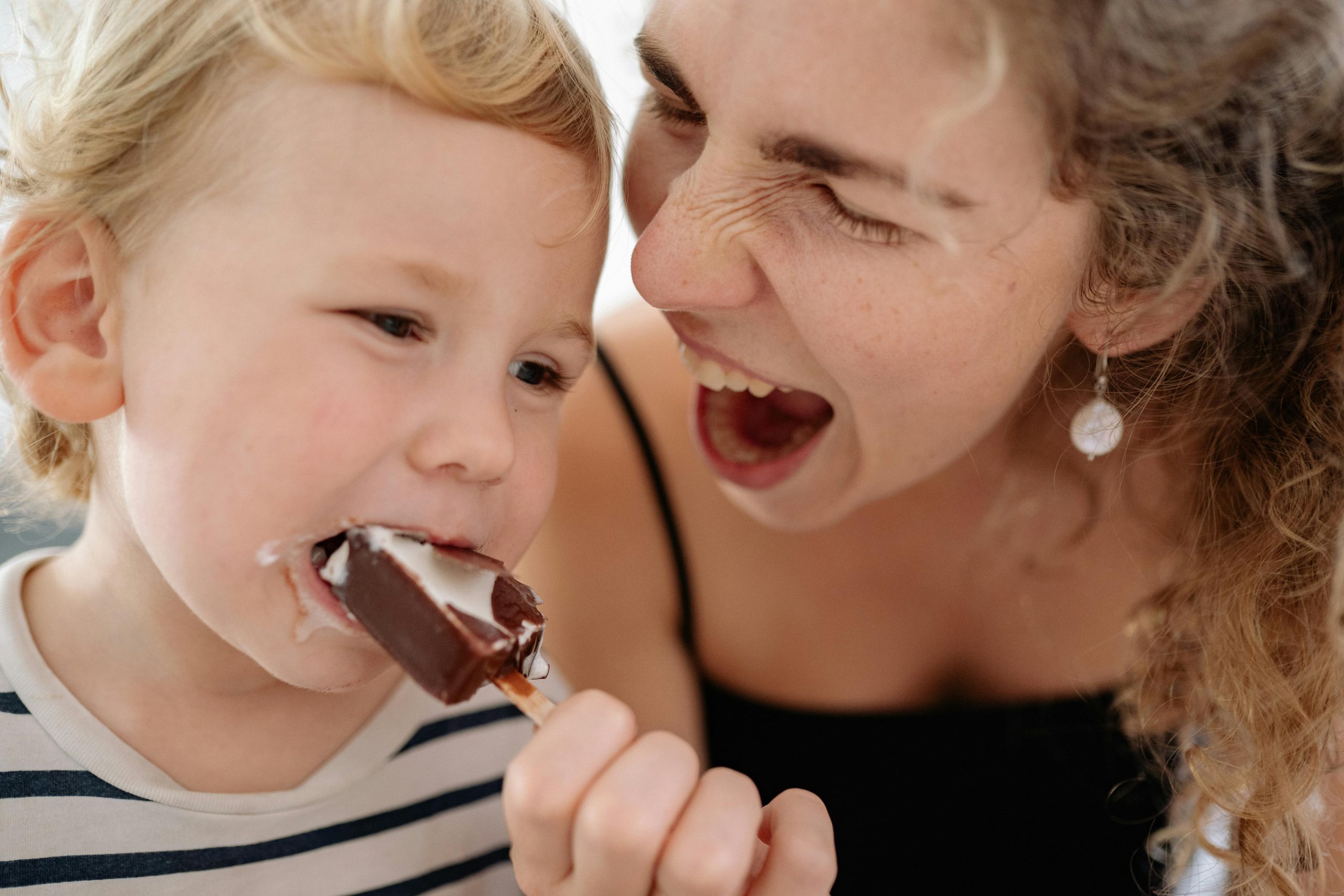
Engaging families
When my son, who is a 5th-grade teacher, asks his students what they did over the weekend, the students are at a loss to share anything other than that they spent time on their devices. To help kids learn about real-life ecosystems, and, importantly, to help them connect with their families while learning, Cornell PhD candidate and former 4-H leader Celeste Carmichael developed a series of nature-based STEM lessons for 4th grade classrooms. Each lesson includes activities to do at home with parents. This coupling of in-classroom and family activities motivated the students to learn, kept them off their devices, and brought the families together―and even improved communications between the parents and teachers. What better way to bring families together to learn about nature-based solutions than through something they love―chocolate?
Footnote: For more on cacao, deforestation, agroforestry, and related actions, check out Mighty Earth.
about the writer
Kalyn Potter
Kalyn Potter is the Mentoring for Equality Project Manager for the equitable education programme STEM Passport for Inclusion. Previously, Kalyn was the Project Manager for two Horizon Europe funded projects emphasising sustainable urban development and human health. Her work centres equity in education, health and sustainable living.
Kalyn Potter
By co-creating with educators and leveraging a systems approach to maximise education outcomes, we can embed NbS into education systems—transforming teaching and learning for a sustainable future.
Despite strong evidence supporting Nature-based Solutions (NbS) in education, they remain underutilized due to systemic, pedagogical, and practical barriers that require holistic solutions.
When considering challenges within different educational systems, such as the rigidity of existing curricula, a way to integrate within the entrenched systems in operation is for NbS to anchor to existing educational priorities rather than aim to establish new priorities from the outset that center NbS. Many education systems are still structured around siloed subjects and standardized testing, with interdisciplinary focuses and connections across siloed domains, such as NbS, still working to gain traction. Teachers are often under pressure to meet specific learning outcomes tied to national standards, which can make integrating NbS feel like an “extra” rather than a core component of teaching, especially if clearly defined pathways for implementation are not articulated or made available.
NbS should be tethered to core curricula, especially in STEM. For example, studying water cycles through wetlands or biodiversity via school gardens supports science standards while promoting systems thinking.
This pathway can support the integration of NbS education, however, it cannot be applied in isolation. A systems approach must be taken to overcome the systemic barriers in place that minimise the uptake of NbS in education. In many countries, challenges include teacher burnout, low pay, and stakeholder pressures limit capacity to adopt new methods like NbS.
Addressing this requires investment in professional development that is context-sensitive and co-designed with educators and local communities. Training should not only build confidence in outdoor and interdisciplinary teaching but also provide practical tools and frameworks that are adaptable to different school environments―including areas with limited nature access and under-resourced communities.
An equity approach is vital. Not all schools have equal access to green spaces, or the resources needed to implement nature-based programs. It is critical to recognise that urban schools in under-resourced communities are more likely to exist amidst a higher population density and lower green space access than schools in wealthier communities or regions. Without support and intentional consideration, NbS education may widen educational gaps, favouring well-resourced schools with better access to green spaces.
To ensure equitable access, NbS initiatives must be scalable and adaptable. Urban schools, for instance, can leverage schoolyards, rooftop gardens, partnerships with local parks, or partnerships with industry to support access to natural spaces. Policymakers and funders must prioritize infrastructure and support for under-resourced schools to ensure that all students can benefit from nature-based learning.
To gain stakeholder support, we must reframe NbS as essential, not optional—sharing success stories, data, and accessible resources. Shared stories need to highlight tangible impact and share data on how NbS improves academic performance, mental health, and civic engagement. Creating accessible case studies, videos, and toolkits that showcase diverse implementations can help educators and decision-makers see the value and feasibility of NbS.
Widely recognized frameworks are needed. Models like the STEM Passport and NbS Framework for Equitable Education offer starting points that foster collaboration between secondary education, third-level education, and industry. However, additional models and frameworks are needed to support alternative pathways towards NbS integration. In development, these must remain flexible, evidence-based, supporting sound pedagogical practice, and policy-aligned. Evidence of impact can be acquired through small-scale pilots supported through partnership with local councils and local NbS-focused industry, which has been used with success by programmes such as STEM Passport.
Mainstreaming NbS in education requires a multi-pronged approach:
- align to existing curricula
- invest in professional development for teachers
- engage partnerships with communities, higher education, and industry to cement supportive pathways to action
- ensuring equity in providing scalable and adaptable frameworks
- communicate impact aimed at disseminating information effectively to each stakeholder group
By co-creating with educators and leveraging a systems approach to maximise education outcomes, we can embed NbS into education systems—transforming teaching and learning for a sustainable future.
about the writer
Diana Lemian
Diana recently completed her master’s degree in building energy efficiency at the Technical University of Civil Engineering Bucharest and is committed to continuous learning and professional growth. Since relocating to Bucharest, she has been actively involved in various European projects while pursuing her goal of creating positive environmental impact in a city facing significant climate change challenges.
Diana Lemian
It doesn’t need to be “mainstream”, our lives depend on it. It deserves serious treatment, and we’re moving in the right direction.
Why isn’t NbS demanding and prevalent in our lives? People either don’t understand its benefits or dismiss it as “too good to be true”. For something to become mainstream, it typically needs popularity and high demand; everyone must want to own it.
NbS is often perceived as difficult to implement, leading people to choose quick, easy solutions instead. Consider a city square: visitors gravitate toward smooth concrete paths and sleek urban furniture with phone charging stations rather than wild plant areas with trees, insects, and wildlife. An NbS-flourished area isn’t “Instagramable”. This mindset reveals our priorities. Recently, online trends have subtly incorporated NBS concepts that people want to buy or display. However, these are perceived as aesthetics rather than practical solutions. “Cottagecore” exemplifies this, a subculture romanticizing rural lifestyles with nature, traditional skills, and vintage charm. While positive toward nature, it’s viewed through the lens of appearance and social media appeal rather than as something genuinely beneficial for our lives.
Regarding education, “mainstream” doesn’t fit here. Math, languages, and chemistry aren’t “mainstream”, they’re essential. Each subject serves a purpose: providing foundational knowledge for adult decision-making, proper living, danger avoidance, and critical thinking development. In short, they help us understand our surroundings and choose what’s best for ourselves and others. NbS seems equally deserving of mandatory inclusion in educational curricula, yet it remains absent. Without getting political, capitalism influences education more than our need to preserve the nature that existed before us.
NbS should become an educational priority, not because it’s the most important subject, but because our lives increasingly depend on it due to climate change and the urgent need to preserve biodiversity and stop fighting against nature.
Romania exemplifies how NbS remains a fleeting concept, rarely discussed. Consider sex education as a parallel: we see negative effects (Romania leads Europe in underage pregnancies), we have the solution (curriculum integration), yet it becomes a political weapon, causing suffering while others gain political capital. The same applies to NbS: we recognize problems and know that an educated population could prevent poor decisions compromising nature or urban sustainability. The myths must be broken.
An NbSEduWORLD project activity I held revealed how 10-11-year-old children already favored nature-harmful urban planning solutions, ideas absorbed from their parents. We must educate both adults and children, though children understand more easily and absorb information like sponges. However, a significant challenge lies in the absence of dedicated NbS educators. Currently, we associate NbS with broader subjects like biology or social sciences, diluting its specific focus and impact. This fragmented approach means students receive scattered information rather than a comprehensive understanding of nature-based solutions as a distinct discipline. We should look forward to developing specialized NbS education programs with dedicated educators who can present it as a cohesive field of study, rather than relegating it to brief mentions within other subjects.
NbS shouldn’t be a buzzword or forgotten trend. It doesn’t need to be “mainstream”, our lives depend on it. It deserves serious treatment, and we’re moving in the right direction. Even when policies and authorities become obstacles, small initiatives like NbSEduWorld can create change through small steps and perseverance.
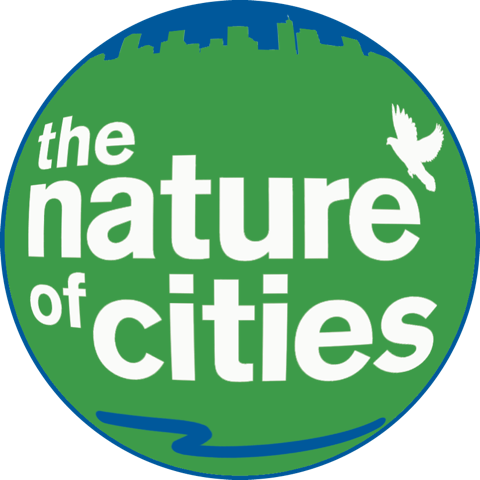
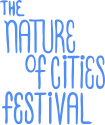
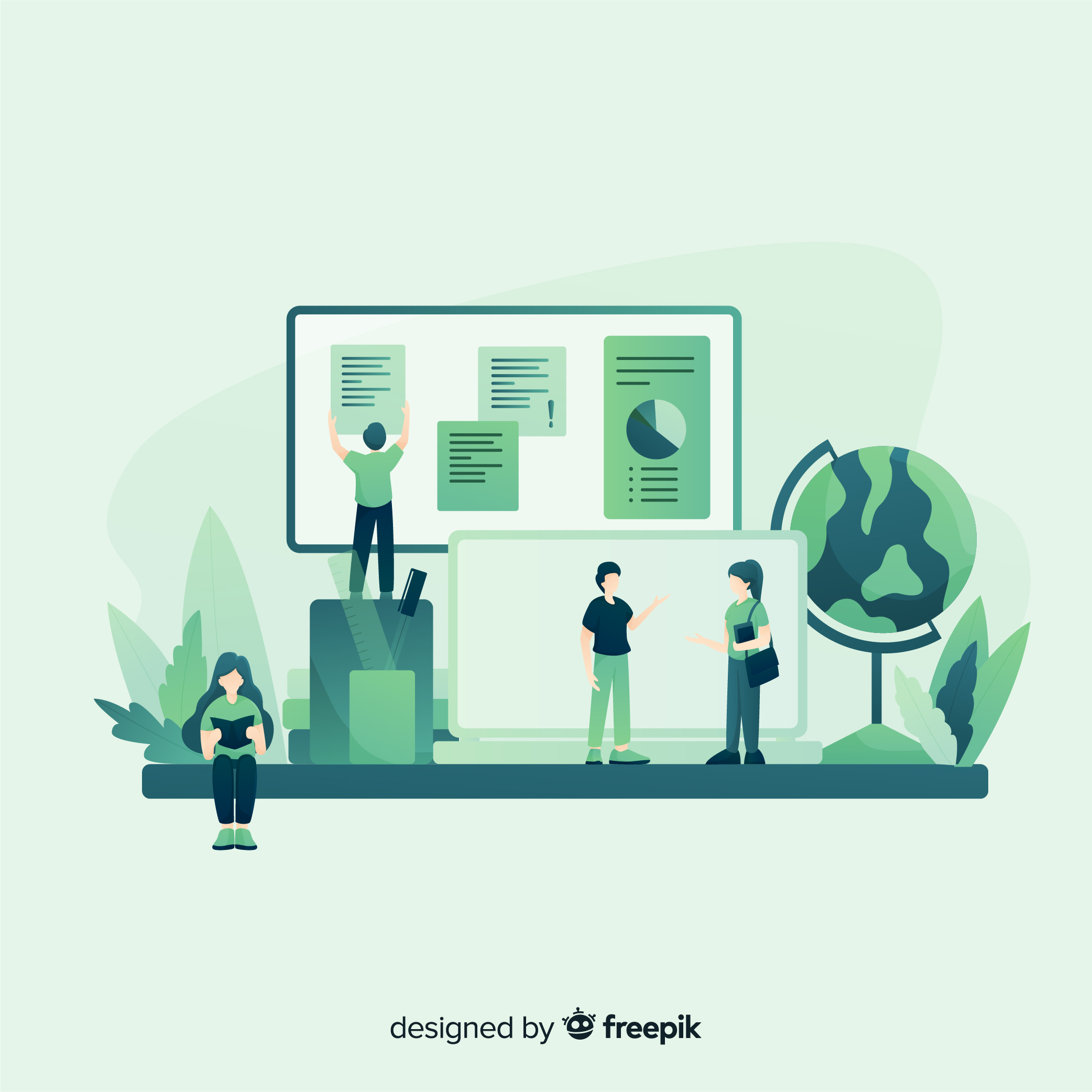

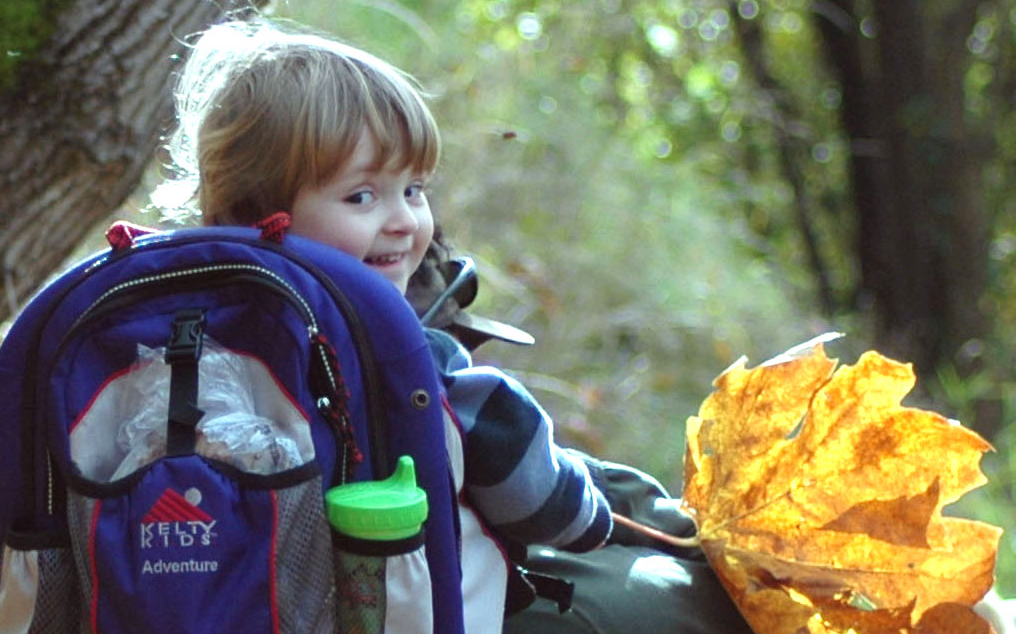
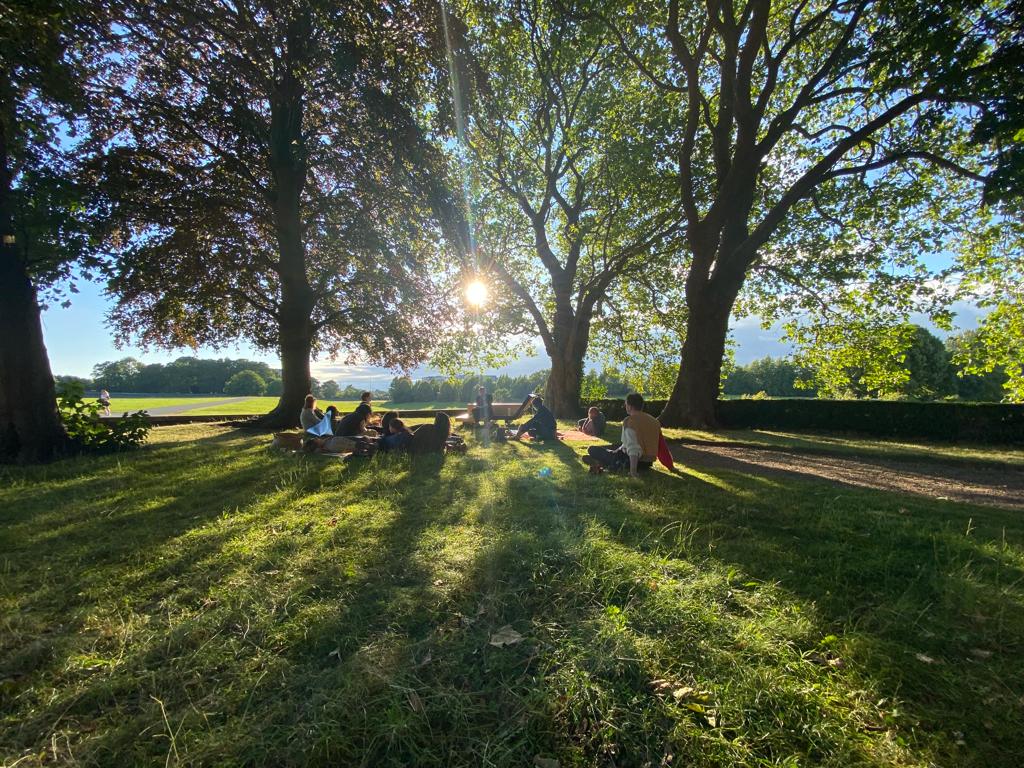

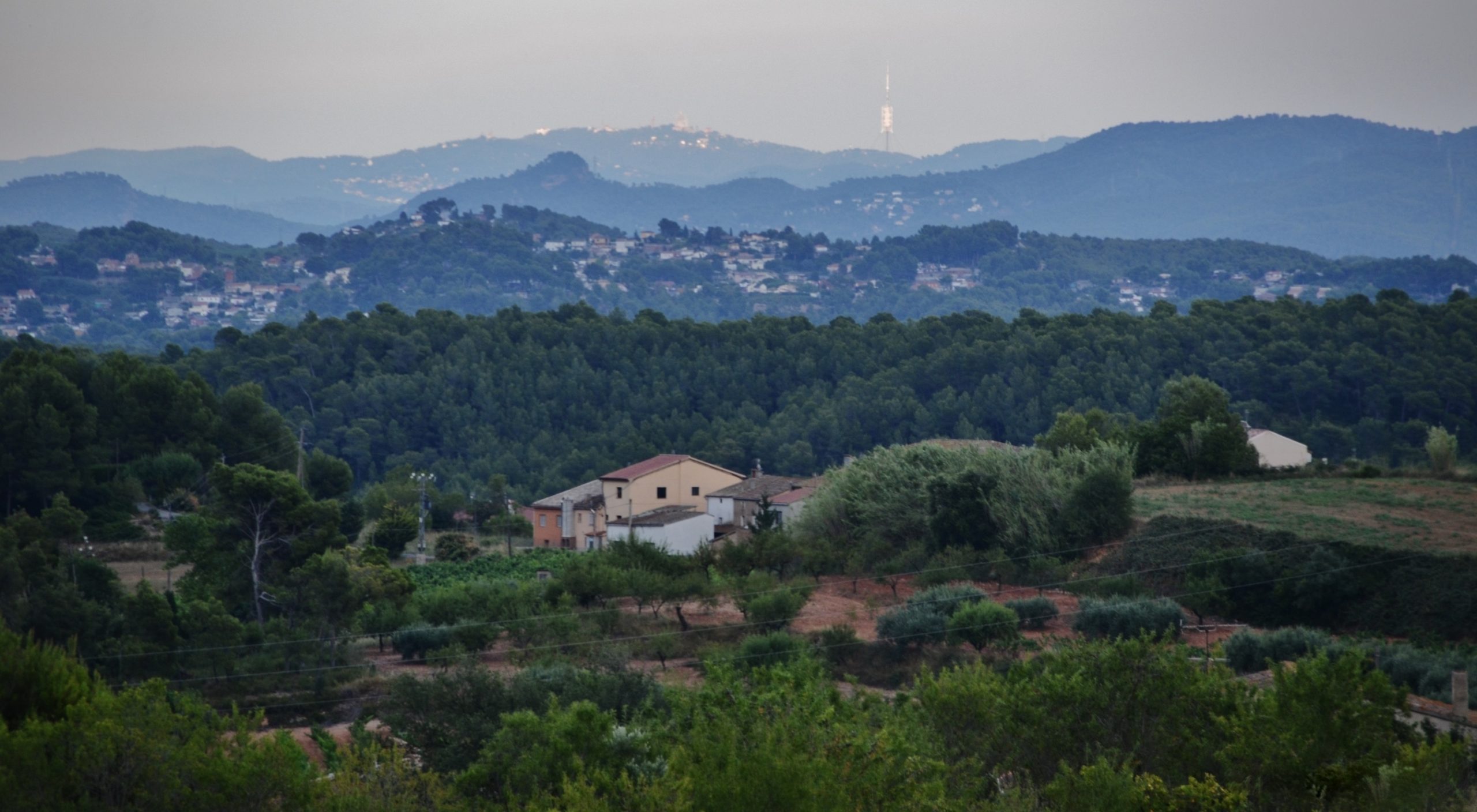
Leave a Reply